#boeing blue sky aviation center
Text
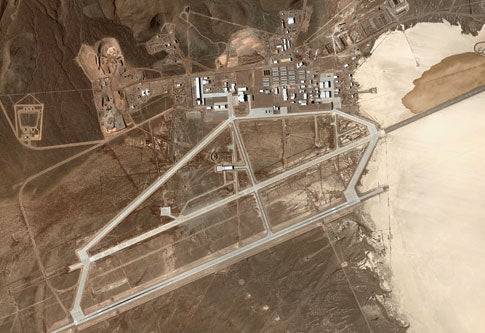
The Top-Secret Warplanes of Area 51
Bill SweetmanPublished Oct 1, 2006 10:00 AM EDT
Aviation photo
On a trip to las vegas in 2004, observing from my east-facing hotel room in the pyramidal Luxor Hotel at daybreak, I watched a fleet of six unmarked 737s make commuter flights to nowhere. These aircraft depart every weekday morning from a tidy, anonymous terminal on the western side of McCarran International Airport. A long line of cars pours into a 1,600-spot parking lot as the jets pull away from the terminal, taxi to the runways, and head out into the desert sky. At the end of the day, the shuttle flights return and the lot empties. The passengers go home and tell their families nothing about what happened at work that day.
Cut to April 4 this year. San Diego is hit by a rumbling shock that isn’t an earthquake. It is ruled out by the media as a sonic boom after military operators claim it is not one of their aircraft. San Diego Union-Tribune reporter Alex Roth does some digging and comes up with six puzzlingly similar incidents around the country since 2003.
Fast-forward to July, at the Farnborough International Airshow in southeastern England. Frank Cappuccio, the avuncular vice president of Lockheed Martin’s secretive Skunk Works division, opens a press conference by introducing what he calls a promotional video, “something to show the kids and families about what we do.” Two minutes into the show, a gray, cockpit-less airplane that nobody has seen before-it looks like a B-2 bomber’s chick-soars over a backdrop of stony, barren hills and mountains.
All these events are linked. They are the visible signs of an invisible, parallel world within the universe of aerospace and defense: the classified, or “black,” world of secret military programs. Those unmarked 737s were ferrying employees to the flight-test center near Groom Lake, Nevada, known to the public as Area 51. The gray airplane is Polecat, a next-generation stealth unmanned aerial vehicle (UAV)-Cappuccio’s video was his sly way of unveiling the program. Those earthquakes? Quite possibly sonic booms from a long-suspected hypersonic attack vehicle, a sleek aircraft that has consumed the imaginations of black-project enthusiasts and military analysts, including me, for two decades. Though seemingly dormant in recent years, the program appears to be on the move again, and with a renewed vigor that has me feeling, somewhat unsettlingly, a bit like the aerospace industry’s own Ahab.

Invisible Fighter
The Vehicle: Stealthy, unmanned combat aerial vehicle The Technology: Visual stealth, including active fuselage lighting that blends into background The Evidence: Patent filing, development of key technology, obvious gap in current arsenal
The black airplane world has, without question, produced the most significant advances in aviation technology. In the 1950s, it spawned the U-2 spyplane, which flew higher and farther than anyone had thought possible. It gave birth a decade later to the SR-71 Blackbird, the exotic, revered speed king. It also produced the slow but stealthy, origami-like F-117 fighter.
But for aerospace sleuths, there’s been little activity recently in the form of declassified vehicles that might hint at current efforts. (Classified programs can be unveiled to aid in broad combat deployment or when the technology appears in other programs.) The F-117 came out of the black world during the first Iraq war 15 years ago, and only three aircraft have been introduced since. One was Polecat. Another was Northrop Grumman’s ungainly reconnaissance aircraft Tacit Blue, nicknamed “the Whale.” The third was Boeing’s Bird of Prey, which tested visual stealth strategies, including shaping that minimizes shadows and contrast and, rumor has it, body illumination that allows it to blend into its background.
This dearth of unveiled prototypes does not mean, however, that the black-aircraft community is dormant. In fact, all signs point to steadily increasing activity. Google Earth reveals a newly constructed additional runway and multiple new hangars and buildings at the base. The usual vague, untraceable allocations in congressional budgets that often signal classified programs are on the rise, and modern technological innovations are now enabling aircraft designs that might have floundered in the black world for years. Further, there are significant gaps in the military’s known aviation arsenal-gaps that the Pentagon can reasonably be assumed to be actively, if quietly, trying to fill.
The need for such secrecy is simple: It is essential to preserving technological surprise. The Pentagon wishes to prevent enemies from developing strategies to counter the technology. The challenge is to figure out what precisely is happening-without betraying national security-because the bigger the black world gets, the better it conceals its activities. What follows is inescapably an educated guess, arrived at by analysis of the available evidence, at the tantalizing designs being cooked up on the sly at Area 51, including a radical special-forces transport, a stealthy UAV, an agile new bomber, and my own white whale-the mythical, hypersonic dragster and presumed source of those faux earthquakes: Aurora.

Recon Platform
The Vehicle: Unmanned flying-wing capable of long-duration surveillance flights, measured in days and weeks instead of hours The Technology: Autonomous flight controls and ultra-efficient electric motors powered by solar panels or fuel cells The Evidence: Patent filing, clear current need, recent development of key technology
Delivering Special Forces Behind Enemy Lines
One of the best pointers to a secret program is an obvious gap in the “white world” force, and one of these gaps is a stealthy, short-runway transport airplane. The U.S. Air Force’s special
operations community has talked for many years about stealthy transports that could take off and land vertically or on a few hundred feet of level ground (a soccer field is the classic example).
The new V-22 Osprey tilt-rotor transport is a partial answer to that problem, but the military would really like something faster, so it can fly farther into and out of enemy territory, and the Osprey’s big rotors quickly betray it to radar. So far, there is no sign of unclassified, white-world money developing such a vehicle. In 1992, however, Skunk Works engineers filed a patent application for such an aircraft. (New aircraft can take years to develop. A 14-year-old patent filing could easily represent a current program.)
Tailless, with a blended wing and body, the aircraft is powered by six jet engines driving rotor-like lifting fans ensconced in wide, round bays in the wings. For takeoff and landing, doors and Venetian-blind vanes cascade open, and the fans lift the airplane vertically. While cruising, the engines drive smaller, forward-thrusting fans. Why six engines? The engines and fans are interconnected by an elaborate system of cross-shafts so that any engine can deliver power to either side of the airplane. With six engines, the airplane can complete a mission if one fails.
Is something like that out there today? The job of a vertical-takeoff-and-landing aircraft still needs doing, perhaps now more than ever before, and, barring antigravity solutions from the friendly aliens at Area 51, an aircraft like this is one of the few ways to get it done. Technologically, it is probably benefiting from the innovations behind the Osprey’s power-sharing engines-in that aircraft, if one engine fails, the second still drives both propellers-and the development of the shaft-driven vertical-lift fan in the new F-35 Joint Strike Fighter, or JSF.
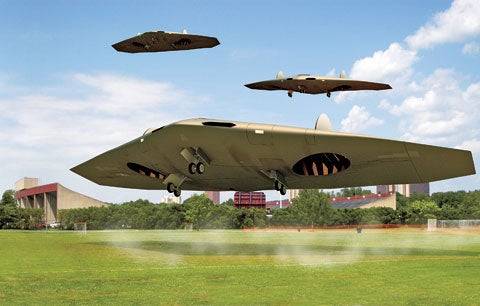
Special-Ops Infiltrator
** The Vehicle:** Vertical-takeoff-and-landing aircraft for transporting special-ops forces to hostile areas The Technology: Blended-wing-body design with six jet engines powering lift fans and providing forward thrust The Evidence: Patent filings, obvious gap in current arsenal, recent development of key technology
New UAVs: Unmanned, Invisible, Unlimited
Although manned fighter jets and bombers have long dominated classified programs, unmanned vehicles are rising as quickly in the black as in the white world, particularly because the Air Force lacks any kind of stealth-reconnaissance aircraft. It plans to replace the U-2 spyplane with the Global Hawk UAV, but even though the Global Hawk has the advantage of being robotic-that is, capable of longer flights and expendable, since there’s no human on board-it doesn’t fly as high and can’t carry the same hefty high-performance cameras as the U-2. Nor does it carry a jammer to spoof enemy missiles.
Polecat, just outed from the black world, is part of the answer. Lockheed Martin representatives talk about an operational version with U-2-like altitude and payload, along with technology to avoid visual detection (including features seen on the Bird of Prey) and, perhaps, an automated system that detects a contrail behind the airplane and tells the flight-control system to change altitude.
Other stealthy UAVs have probably been tested-among them, possibly, armed UAVs. It is known, for example, that engine maker Williams International delivered the first dozen or so of its new FJ33 small jet engines to the U.S. government four or five years ago, but no known project uses that engine. A recent report in Jane’s International Defence Review described another, larger vehicle that uses different engines from Polecat, apparently recycled from a 1960s UAV program. The article speculated that the engines are probably General Electric J97s, built for a UAV called Compass Arrow.
Why reuse old jet engines? There is only one good reason. The J97 was unusual in that it was designed to operate at up to 80,000 feet, an altitude at which most jet engines cough, stall, and quit. The Air Force does not send the stealthy B-2 and F-117 over hostile territory in daylight, because those planes could be easily spotted. But at 80,000 feet, six miles above a fighter’s cruising altitude, the sky is almost as black as night, and a UAV could survive at high noon. I suspect that both Polecat and the second, larger stealth UAV are currently undergoing high-altitude flight-testing at Area 51.
Some UAV projects may be much slower than even the stealth birds. A Boeing patent filed in 2004 describes a vehicle that is a cross between an airship and an airplane-employing both buoyant lift from helium gas and wing lift generated by forward speed, and capitalizing on recent developments in on-board solar power generation and autonomous flight control.
What would be the advantage of such a vehicle? For one thing, it would have long flight endurance, measured in days or weeks rather than hours. For another, airships can easily be made to accommodate very large and sensitive antennas. If you want to locate weak or sporadic radio transmissions-such as cellphones or scattered satellite phones used by insurgent groups-the airship is an ideal platform.
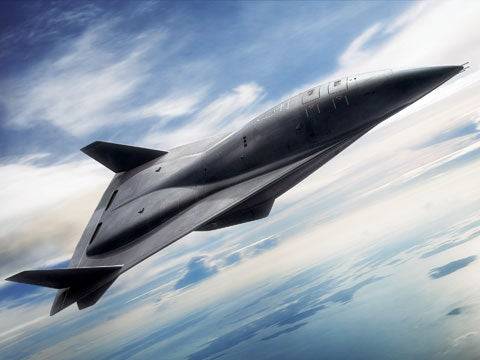
On-Time Delivery
The Vehicle: Aurora Mach 6-plus attack aircraft The Technology: Ramjet-powered delta wing The Evidence: Telltale sonic booms; unconfirmed sightings; unresolved history of long-rumored program; recent development of key technology; large, unexplained current budget allocation Is speculating on top-secret military technology a national security risk? Tell us what you think on the PopSci Blog).
Revived Avenger Offers Stealthy Ground Attacks
Another surprising gap in U.S. capabilities is the lack of an all-weather, stealthy ground-attack aircraft. The Joint Strike Fighter is supposed to do that, but not until 2014. The new F-22 Raptor, mostly an air-to-air fighter, will be able to do some of it eventually, but that jet carries a relatively modest 2,000-pound bomb load. The F-117 Stealth fighter can be flown only in clear nighttime weather-it has no radar to bomb accurately through clouds, and its black coating easily betrays it to ground spotters.
Fellow black-project sleuth Jeffrey Richelson, author of the 2001 book The Wizards of Langley and one of the leading historians of U.S. intelligence efforts, guessed in a recent conversation that a behind-the-scenes tour of Groom Lake might reveal a revived program to plug that gap sooner than 2014, when the JSF flies.
A hint about possible all-weather attack vehicles now in testing-ones available sooner than 2014 and capable of carrying significant bomb loads-could reside, aerospace historian Peter Merlin pointed out, in a test pilot’s unclassified biography. Daniel Vanderhorst, who flew Northrop’s Whale and six other secret aircraft in a 20-year career, evidently “tested modified landing gear and conducted initial tests of internal weapons bays and weapon separation tests.” What’s unusual about this is that most prototypes are simple aircraft without weapon bays, which suggests that this airplane was closer to an operational type. Specifically, I’m guessing, it could be an extension of the heavy-payload, all-weather attack jet A-12 Avenger II, which then”Secretary of Defense Dick Cheney canceled in 1991 because it was overbudget and not meeting its technological goals.
The flying-wing, carrier-based stealth-strike airplane was being developed under a tightly classified but not-quite-black program. The jet was only 11 months from first flight, and nobody has ever disclosed what happened to the partly built prototypes. If one of them had been completed and tested in a revived black program, most likely in the early 1990s, it could have pointed the way toward the F-117 replacement that Richelson suspects is flying now. Unlike the other stealth aircraft, an operational A-12 descendant would combine stealth ground-attack capability with the ability to shoot back at enemy fighters, packing a pair of anti-radar missiles and two AIM-120 air-to-air missiles.
Providing On-Demand Worldwide Attack
Lastly, there’s Aurora. The name itself is mysterious, evoking something you may or may not have seen. This code name leaked out of an unclassified budget document back in 1985. Such a vehicle-a ramjet-powered reconaissance and strike aircraft capable of flying at least five times the speed of sound and deploying anywhere in the world in a matter of hours-has been high on the government’s wish list. Aurora is certainly possible. The basic propulsion unit, the ramjet, is no more than a tapered tube with a fuel injector and burner in the middle and a thrust nozzle at the end. Basic ramjet-powered missiles have topped Mach 6. A wealth of aerodynamic data and test flights suggest that a wedge-shaped aircraft would work at these speeds.
I first heard about this kind of program in the mid-1980s, and the first public hint of the project popped up in 1988, when the New York Times reported that the Air Force was developing a spyplane capable of better than Mach 5-nearly twice as fast as the SR-71, then the world’s fastest airplane.
Two years later, the Blackbird was retired. In June 1991, the first in a series of unexplained shock waves rolled across the Los Angeles basin, rattling doors and windows and making people think of earthquakes. But they were not earthquakes, and the military adamantly denied that any of its vehicles caused the booms. In May of this year, I consulted with Dom Maglieri, an ex-NASA sonic-boom expert who has played a key role in the development of low-sonic-boom aircraft. We studied 15-year-old seismograph data from the California Institute of Technology, whose uniquely sensitive sensors could actually track the booms. “The data showed something at 90,000 feet, Mach 4 to Mach 5,” Maglieri says now. The booms did not look like refracted, “over the top” booms, as other reports had indicated-booms from aircraft miles away that had traveled up through the atmosphere and bent down toward Los Angeles. The booms looked like direct overflights by a supersonic airplane that no one admitted to owning. “The signatures are awfully different,” Maglieri says.
Shortly after the first set of waves appeared, Chris Gibson, an oil engineer and well-known aircraft-recognition expert, contacted me. In August 1989, Gibson said, he had been working on a North Sea rig when a colleague called him outside to see a formation of airplanes overhead. Clearly silhouetted against the sky were two F-111 bombers, a KC-135 tanker and-in refueling position behind the tanker-an unidentifiable delta-shaped airplane, about 90 feet long, a near-perfect match for unclassified studies of high-supersonic cruise airplanes.
This evidence helps establish the program’s initial existence. My investigations continue to turn up evidence that suggests current activity. For example, having spent years sifting through military budgets, tracking untraceable dollars and code names, I learned how to sort out where money was going. This year, when I looked at the Air Force operations budget in detail, I found a $9-billion black hole that seems a perfect fit for a project like Aurora.
Over the years, I’ve learned that few people investigate budget holes seriously. Analysts such as Steven Kosiak of the Center for Strategic and Budgetary Assessments, a Washington, D.C.”based think tank that pushes innovation in defense, doubt that Congress even knows what’s going on. “A fair amount of classified spending goes through in supplemental requests,” he told me. “It’s seen as must-pass legislation, and people don’t look at it closely.” This $9-billion gap and the most recent booms felt in San Diego and elsewhere are the most compelling evidence for the program’s resurgence. (We can’t analyze the new booms because seismic sensors of the same type were not present.)
But if Aurora has been active for years, why would it be surging forward now? The main hold-up has probably been fuel. The way to make a hypersonic cruiser work is to use circulating fuel to soak up the engine’s heat, but conventional jet fuel can’t absorb enough heat to do the job. In the 1980s, Aurora would have been designed to use fuels such as hydrogen or methane, which are gaseous at normal temperatures and had to be supercooled and densified to fuel the aircraft. Although that strategy is possible, it’s not operationally easy, and complicated refueling would be counterproductive for a jet intended to provide prompt overflight when the military needed it. Better fuels and engine technologies exist now.
The question, finally, is does Aurora exist? Years of pursuit have led me to believe that, yes, Aurora is most likely in active development, spurred on by recent advances that have allowed technology to catch up with the ambition that launched the program a generation ago.
Bill Sweetman is a PopSci_ contributing editor and author of more than 30 books on aerospace technology._
9 notes
·
View notes
Text
Harrison Ford: 2018 summary (II)
(PART I HERE)
JULY:
2nd: Harrison Ford at the restaurant Leña Brava, Chicago [x]

4th: at the airport in Los Angeles. Harrison has stubble and starts to grow a beard, stirring once again the Harrison fandom

Enjoy this fluffy man in all his almighty fluffiness

10th: Harrison Ford will be honored by Indianapolis Zoo with the Jane Alexander award for wildlife conservation
11th: more bad news for Indy 5: 'Indiana Jones 5' will be delayed a year until 2021
Walt Disney Studios announced that Ford's still-untitled return to his famed Indiana Jones character would be delayed from July 10, 2020, the movie's original release date, to July 9, 2021.
13th: HAPPY BIRTHDAY HARRISON!

Mark Hamill congratulates Harrison for his birthday
16th: Harrison Ford eyes ‘Call of the Wild’
Harrison Ford is in negotiations to star in “Call of the Wild”. If a deal is reached, the “Star Wars” actor will play John Thornton, a prospector braving the Yukon on the hunt for gold. The big-budget film is being adapted by 20th Century Fox from the classic 1903 Jack London novel about the Klondike gold rush of the 1890s.

(non-related picture just for gratuitous lusty enjoyment)

The stubble is killing me
21st: at the opening event of The Boeing Blue Sky Aviation Gallery, Denver, Colorado [x] [x] [x]



Oh God he´s so beautiful... (also a brief spontaneous speech here)
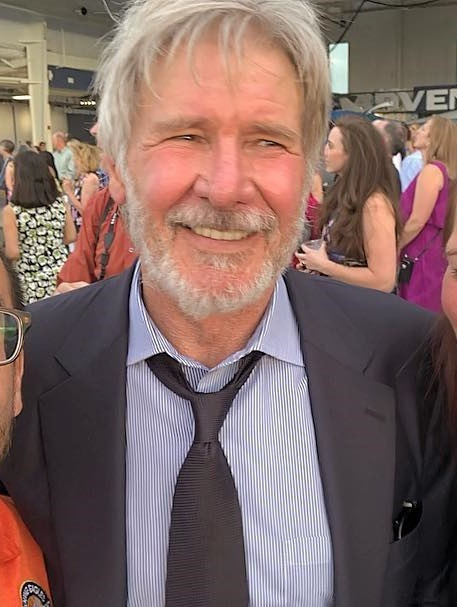
24th: Dan Stevens Joins Harrison Ford in ‘Call of the Wild’. The film is supposed to start filming on August-September in Vancouver.
AUGUST:
6th: 25 years ago The Fugitive was released in cinemas

Early August: When grandpa tells stories about the good old days… (Pic from Eliel Ford)

16th: Play it again, Harrison [x]

21st: God, look at this caveman! [x]
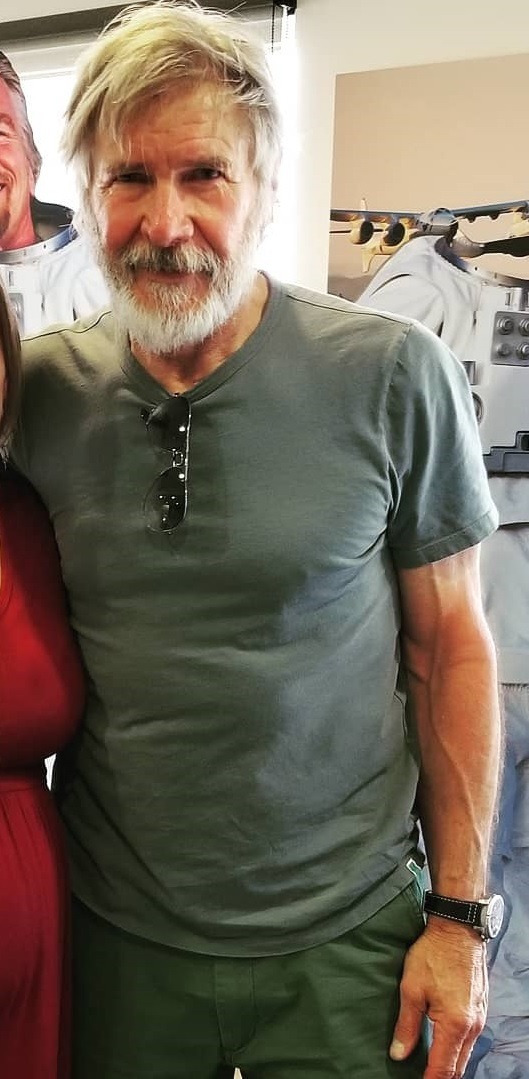
30th: Harrison Ford’s ‘Call of the Wild’ Adds Colin Woodell
SEPTEMBER:
12th-13th: Celebrity-watching: A-listers in Hollywood, music and politics gather in SF for Climate Summit.
Thousands of business leaders, mayors, governors and activists from around the world are gathering in San Francisco this week for the Global Climate Action Summit, and some of the speakers are big names in Hollywood, music and politics. Actor Harrison Ford of “Star Wars” fame is the vice-chair of Conservation International and will be speaking Thursday in a session titled “Thriving Plant: A New Hope for the Next Generation.”

Harrison Ford begs voters to 'stop electing leaders who don't believe in science'
“Stop giving power to people who don’t believe in science. Or worse than that, pretend they don’t believe in science for their own self interest”
youtube

Harrison Ford takes a break at the Climate Summit [x]
13th: Harrison Ford’s ‘Call of the Wild’ Casts Omar Sy
17th: Harrison Ford hanging out in San Francisco [x]
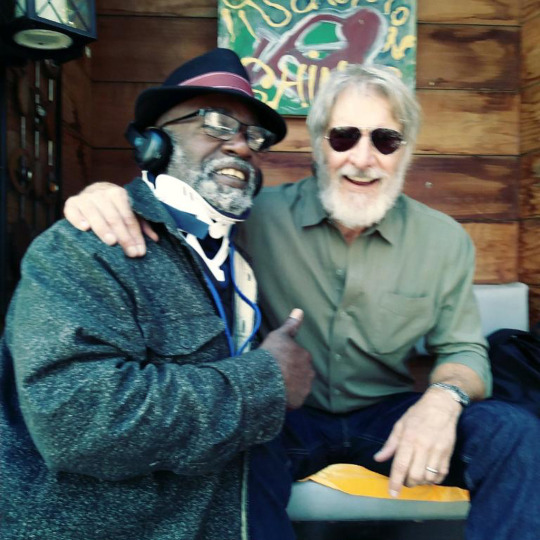
23rd: Harrison Ford to Address Top Donors at New Beginnings Counseling Center
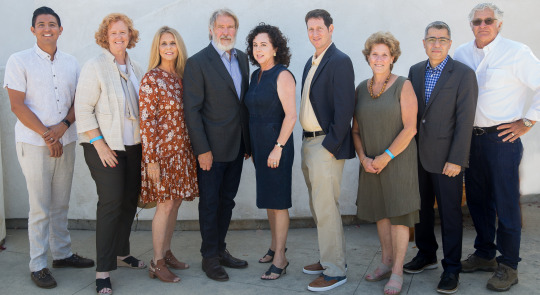
Board of Directors of NBCC Celebrating 50 Years of Service with Harrison Ford
27th: Guardians of the Galaxy actor Karen Gillan joins Harrison Ford in Call of the Wild film adaptation
30th: Harrison Ford honored at Indianapolis Prize Gala
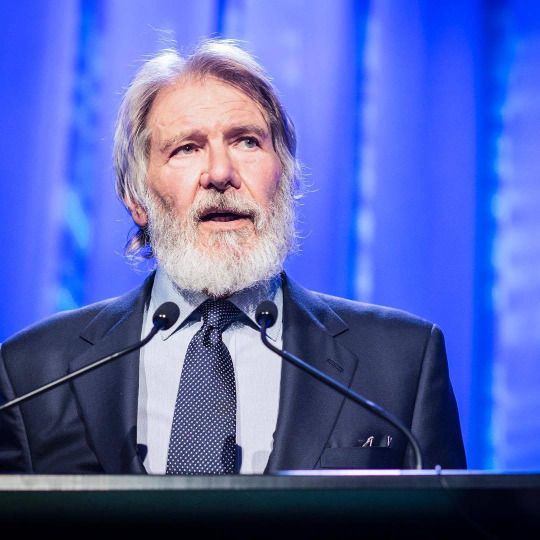
One of the most recognizable award recipients at this year's Indianapolis Prize gala was Harrison Ford. He's known to most of us as an accomplished actor, but Ford is also a vocal ambassador for conservation.
"Protecting nature is how we will continue to survive on this planet," Ford said. "Protecting nature is first and foremost for me a moral imperative. Yet saving nature is really about saving ourselves."
At the JW Marriott, Ford joined his close friend, 2018 Indianapolis Prize winner Russ Mittermeier. They reminded the gala crowd that nature doesn't need people, people need nature. Ford himself was honored as the Jane Alexander Global Wildlife Ambassador.
youtube
Harrison Ford congrats Biologist and Conservationist Russell Mittermeier for winning the 2018 Indianapolis Prize award (video filmed in June 2018)
OCTOBER:
1st: Indiana Jones 5 Will Return to Global Scope, Says Frank Marshall
“This will be Harrison Ford’s last Indiana Jones movie, I am pretty sure, but it will certainly continue after that,” Spielberg previously said.
4th: sweaty Harrison take a rest after jogging in Santa Monica. Keeping in shape for Indy 5?
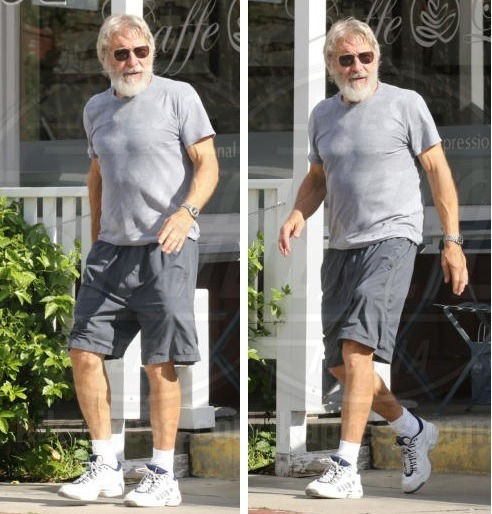
18th: Harrison on the set of Call of the Wild in Los Angeles (he´s wearing his character´s outfit) [x]

25th: No beard but goatee is back. Has he finished Call of the Wild?

28th: Harrison Ford To Present Award At The Carneys
Hollywood star Harrison Ford is making a rare public appearance on October 28 at Elvis Duran’s 4th Annual Carney Awards. The star of the Indiana Jones and Star Wars films will present the Chairman’s Lifetime Achievement Award to the legendary character actor M. Emmet Walsh. The two of them appeared together in the original Blade Runner movie in 1982.

Actor M. Emmet Walsh and Harrison Ford at the Carney Awards, Santa Monica
NOVEMBER:
9th: SAG-AFTRA Foundation Honors Spike Lee, Harrison Ford, Lady Gaga and Jeffrey Katzenberg

The SAG-AFTRA Foundation held their 3rd Annual Patron of the Artists Awards last night honoring industry leaders and artists who champion the arts and whose history of fostering creativity and creating opportunities has made a positive impact on the performing arts and the world.
Harrison Ford Rails Against ‘Nationalism and Isolationism’ at the SAG-AFTRA Awards
Harrison Ford didn’t mention any politicians by name during a speech about climate change, but there’s little doubt that he wasn’t referring to President Donald Trump.
Harrison Ford on whether Chris Pratt is joining Indiana Jones "I think it's him or me" [x]
Harrison shares an ‘Indiana Jones V’ update:
youtube
Other highlights of the event:
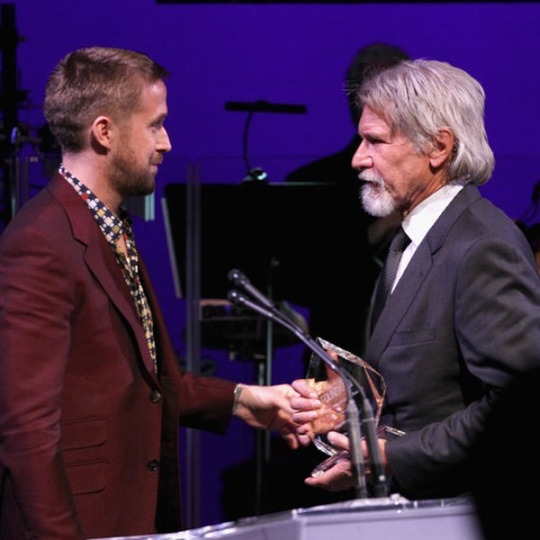
Ryan Gosling presents Harrison Ford with the Artist Inspiration Award

Find someone who looks at you the way Lady Gaga looks at Harrison Ford
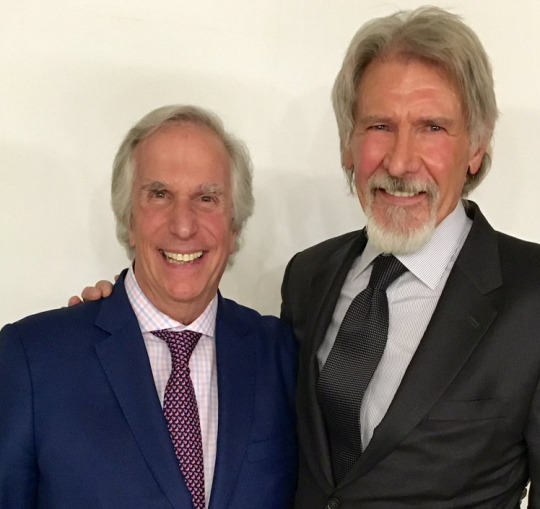
Harrison reunites again with his former co-star Henry Winkler (they worked together in the movie Heroes (1977)
10th: Like a boss on the streets of LA

12th: “I’ll tell you the dirty little secret—I love doing this” . Harrison talks to young actors about his experiences during his movie career [x] [x]
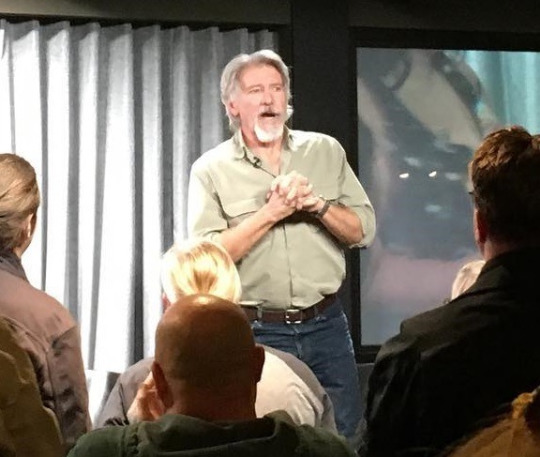
16th: Harrison Ford Supports Disaster Relief Fund for SAG-AFTRA Members
youtube
19th: Harrison and Calista attend the Academy of Motion Picture Arts and Sciences’ 10th annual Governors Awards

27th: That Time Harrison Ford Drank A Bottle Of Scotch While Trying To Film Empire Strikes Back
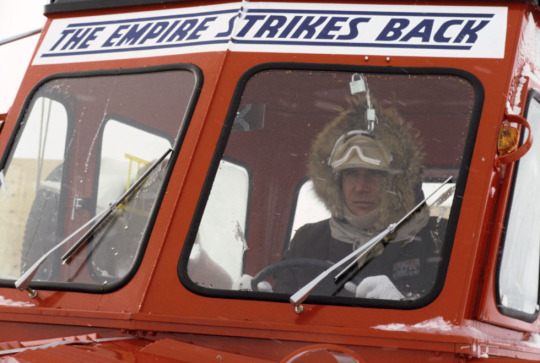
Harrison Ford recently revealed a horror story involved with filming the sequences set on Hoth. George Lucas took production to Finse, Norway for the snowy scenes, but Ford had a hard time getting to set. In fact, he was stuck on a snowplow for about hours trying to regret there, ultimately taking to a bottle to get him through the nightmare.
DECEMBER:
3rd: 'Working Girl' Turns 30: On-Set Romances and Secrets of the Staten Island Ferry Revealed in Juicy Oral History

30 years ago on this date Working Girl was released in cinemas
19th: Harrison Ford goes for a walk in Brentwood, Los Angeles. In all his magnificence. Now full shaved
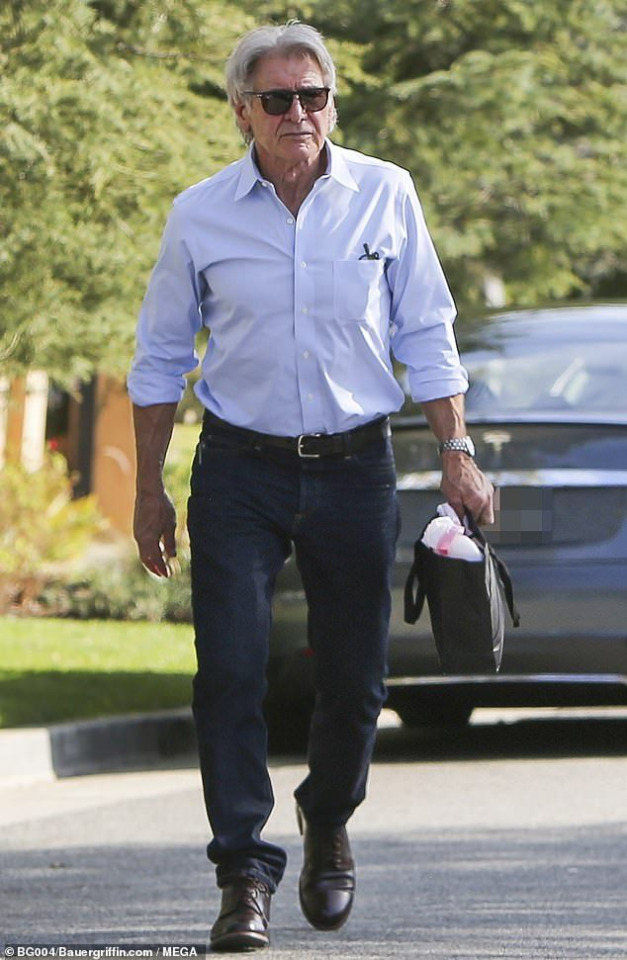
27th: Harrison Ford Honors Billy Dee Williams at the American Black Film Festival with moving tribute video
Earlier this year, Billy Dee Williams was honored with the Hollywood Legacy Award at the American Black Film Festival Honors. While the awards ceremony was back in February, the iconic actor must be reflecting on his year, because he recently shared a video from the ceremony of his long time friend and co-star, Harrison Ford. (Video at Billy Dee Williams´ twitter)
31st: Remember to dress like this the day after

#harrison ford#conservation international#indianapolis prize#global climate action summit#san francisco#los angeles#chicago#denver#boeing blue sky aviation center#aviation#mark hamill#carrie fisher#george lucas#star wars#steven spielberg#indiana jones#the fugitive#andrew davies#tommy lee jones#working girl#mike nichols#melanie griffith#sigourney weaver#movies#cinema#blade runner#ridley scott#emmet walsh#SAG-AFTRA Foundation#spike lee
7 notes
·
View notes
Text
Episode 345 - Save the Reno
Join Carlos, Matt, Nev, Armando and the legendary Bob Mills for this week's aviation silliness.
In this week's show the Boeing 737 Max can finally fly passengers, Singapore airlines installs their new first class onto all its A380's & two pilots get into trouble for drawing non-family-show content in the sky.
In the military this week The US Air Force continues to expand options for enlisted Airmen and some officers to seek pilot positions and the first F/A-18C from the Blue Angels lands in Washington for display at the Smithsonian.
We welcome to the live show, guest Bob Mills to talk about the National Championship Air Races. If you'd like to make a donation please go to :
https://airrace.org/save-the-races/
If you want to learn more about the appeal, you can watch it here :
https://www.youtube.com/watch?v=ZlZZR1qcXiA
Neil Cloughley continues his chat with Carlos about the fascinating Faradair project and this week we learn the details about the proposed propulsion system.
In this week's Plane Truth we're learning about Engine Failures & Full Authority Digital Engine Control (FADEC).
Search social media for 'PlaneTalkingUK'
Whatsapp Number - +44 757 22 491 66
Email - [email protected]
Website - www.planetalkinguk.com
Here are the links to the stories we featured this week :
COMMERCIAL
737 Max cleared for take-off
https://edition.cnn.com/2020/11/18/business/boeing-737-max-approval/index.html
https://uk.reuters.com/article/boeing-737max-regulators/analysis-as-regulators-prepare-to-weigh-in-on-737-max-faas-global-dominance-fades-idUKL1N2I42I3
https://www.bloomberg.com/news/articles/2020-11-18/boeing-max-cleared-to-fly-as-faa-lifts-longest-u-s-grounding
https://www.bloomberg.com/news/articles/2020-10-16/boeing-max-declared-safe-to-fly-by-europe-s-aviation-regulator
https://www.flightglobal.com/farnborough-2020/737-max-certification-remains-urgent-for-boeing-even-as-new-jet-demand-sags/139027.article
https://www.aerotime.aero/ruta.burbaite/24277-ryanair-s-737-max-200-design-issue-prompts-new-delays
https://www.bbc.com/news/business-54981658
http://news.aa.com/news/news-details/2020/Return-of-the-Boeing-737-MAX-to-service-OPS-DIS-11/default.aspx
Qantas Centenary Celebrations
https://simpleflying.com/qantas-boeing-787-sydney-harbor/
https://www.youtube.com/watch?v=ktoI40GCSFg&feature=youtu.be
British Airways and American Airlines launch transatlantic Covid-19 tests
https://www.thenationalnews.com/lifestyle/travel/british-airways-and-american-airlines-launch-transatlantic-covid-19-tests-1.1113503
Is MOM Air, a new and familiar-looking budget airline, for real?
https://www.lonelyplanet.com/articles/mom-air-new-budget-airline
https://onemileatatime.com/mom-air-iceland/
https://onemileatatime.com/mom-air-artwork-not-real/
Singapore A380 New First Class to be installed on all A380s
https://mainlymiles.com/2020/11/15/singapore-airlines-will-fit-all-12-of-its-a380s-with-new-cabin-products/
Two pilots are under investigation for allegedly altering their flight path to draw something rude in the sky
https://www.airlive.net/two-pilots-are-under-investigation-for-allegedly-altering-their-flight-path-to-draw-a-gigantic-penis-in-the-sky/
MILITARY
Air Force Will Now Offer Enlisted Troops a Path to Pilot Training
https://www.military.com/daily-news/2020/11/18/air-force-will-now-offer-enlisted-troops-path-pilot-training.html
Taiwan Grounds F-16s After Second Fighter Accident in Less Than a Month
https://www.voanews.com/east-asia-pacific/taiwan-grounds-f-16s-after-second-fighter-accident-less-month
First Blue Angels F/A-18C Has Arrived At The National Air and Space Museum’s Udvar-Hazy Center
https://theaviationist.com/2020/11/19/first-blue-angels-f-a-18c-has-arrived-at-the-national-air-and-space-museums-udvar-hazy-center/
Our latest episode is now ready for your listening pleasure -->
0 notes
Text
Learning to fly the wrong way—and loving every minute of it
It was a simple, declarative sentence in faded letters on a metal sign.
Learn to Fly Here.
The 14-year-old boy read that magical sign each Saturday morning as he and his father arrived at the small, rural airport near their home. He dreamt of the coming day when he, too, would be walking out to the waiting Cessna to pre-flight the airplane—touching things, nodding approval, removing tie-downs and chocks, climbing up to check fuel… Someday he would be the one yelling “Clear!” from the window and then firing up that machine to taxi away from the ramp and then into the sky, transforming itself from a cumbersome, wheeled vehicle into a statement of grace in flight. His Dad would be waiting for him to return, perhaps nervously; proud as he returned to the ramp one step closer to joining the exclusive society of Pilots. Airmen. Aviators. Inhabitants of dimly lit, mysterious rooms called the “Pilot’s Lounge.”
A simple sign, but a powerful invitation.
Learn to Fly Here.
I was not that kid.
The 48-year-old man with the mortgage and payments for cars, tuition, insurances and all the rest, driving away from another customer meeting, toward yet another customer meeting, read the sign, written in faded blue letters on a rusting white background, and found himself reaching with his left hand for the turn signal lever. Parked in front of a slightly down-on-its-luck-looking building, with a door marked “Office,” he wondered aloud, “What am I doing?” Why are there airplanes off to one corner, in various states of disassembly, some wingless and broken?
Youthful plans and dreams that once had fueled ample ambition had become muted—spent on college, marriage, kids, career, kids, career, education, promotions… the grind. He regretted none of those things and did not feel sorry for himself. But he was keenly aware that some things were left undone. Opening that “Office” door seemed to be the least practical thing he should do at that moment. He pulled on that impractical door and stepped into a new domain. Those present, engaged in what seemed to be important tasks, looked over at the newcomer for a moment, judged him to be a wide-eyed beginner, and then carried on with their work. Some were peering at computer screens full of maps and numbers, others were intently measuring distances on maps, and still others were just drinking coffee and engaging in important pilot discussion. There was a counter with a glass display case with headsets, books, maps, and hats. A young man behind the counter was handing a clipboard with a key attached to a teenaged girl. The young man looked up at the him and asked, “can I help you?”
His wife wouldn’t understand. His friends wouldn’t understand. His waiting customer would wonder where he was. This was for him. This was going to be his own. He was doing it.
Learn to Fly Here.
I am not that guy.
I’m the other guy. At the age of 57, I started my training for the Private Pilot certificate. Again.
Writing about flying airplanes is certainly not a novel idea and I doubt it can be done any better than Richard Collins did it; his columns and the book Stick and Rudder by Wolfgang Langewiesche have been critical to my developing knowledge of airmanship. There are magazines and newsletters and blogs dedicated to aviation. The writing in many of these publications fills a much-needed void but there are a few that are first rate, informative, and entertaining and among them Air Facts Journal is exemplary because its words are of, for, and by us—the grizzled stick and rudder flyers and rank beginners alike—die-hard seat-of-the-pants flyers and techno-savvy youngsters, each and all galvanized by the art and promise of flight.
This is my story. It is being written in real-time as I go through the process of becoming a pilot.
Like most hangar and pilot’s lounge talk, the preceding sentence is only mostly true. The truth is that I thought about starting this writing project when I started taking lessons. That was 265 hours of flying ago and I’ve just begun writing from the notes I’ve made along the way.
The general aviation hook was set years ago, thanks to a Mooney 201.
My infatuation with airplanes began when I was 17. My father bought a brand-new Mooney 201. It was a 1977 model, tail number 201FJ. I remember my first ride in that airplane as though it were yesterday. Pittsburgh’s KAGC was under high, gray skies as usual but that didn’t diminish my feelings of excitement and wonder. I don’t recall where we went that day or why, but I do recall the smell of the hangar and of the cabin of that plane, and its impossible array of gauges and instruments. My dad explained some of them and others remained a mystery.
A few years later, a used Bell 206B JetRanger was purchased. A foreman and I poured a rectangular concrete pad and covered part of it with a military style Quonset hut on the grounds of the family business. My Dad would land the helicopter on the pad and shut down. I would then secure the aircraft and use a tow bar to lift and push the machine into the hut.
I never flew either aircraft back then, but I flew in them. The general aviation hook was firmly set.
I made two faltering attempts to obey the declaration of that faded, painted metal sign. Each attempt yielded a cheesy flight bag and books, an E6B and plotter, and a few hours of instruction. Life had other plans for my immediate future. There were a variety of shenanigans and misadventures, more than a few romances, and life rolled on.
My career required countless moves around our great country. And later, having cashed out of the business I had started and gone all in on a technology startup, my travels broadened. Seven years commuting monthly to Berlin followed by another six years commuting monthly to Budapest brought me home to the Midwest. Nearly 5 million miles on commercial airliners and 1,000 nights in hotels ranging from opulent to “just try not to touch anything” left me in a state of not wanting to fly commercial again. Ever.
My business travel for the past five years has been almost entirely domestic. Our customers tend to be within 800 miles of home. I Googled airplane charters. It didn’t take long to discover that if it burned Jet-A, we couldn’t afford it. It seemed that no one ran a charter operation with a piston twin. Except one guy. That simplified the decision process.
After a first successful sales trip in a well-used and somewhat threadbare Cessna 310 with two of us as passengers, a second soon followed. I signed up for instruction and learned that we could save a few bucks by using a 182RG and taking the time as dual instruction. I owe a huge debt of gratitude to the fearless colleagues who went along on those early trips when the ball was only occasionally centered, and approaches were rarely stable. The 182 made for slow going and some very long days and I was unhappy with the condition of the airplanes. I began to feel that another solution was needed.
An acquaintance introduced me to a man who had a leasing operation. The result was that after working out lease arrangements I was soon logging hours in the right seat of a Cessna 310 and a Cessna 421, flying our business trips with retired airline pilots and controllers, a young pilot who flew antique, radial engine airplanes in Alaska during the season, plus one unique pilot—also the owner of the airplanes—who nearly defies description. Imagine a man in his late sixties who, with a unique blend of southern-accented charm and rascality, tells a nearly continuous stream of hilarious and often instructive stories. He also happens to be the best stick and rudder man anyone at the airport has ever met and I’d fly with him any day.
When the pilot I’m flying with is a CFI, I log the time as instruction. Otherwise I log the time, but not as instruction. And I can report that I have logged some interesting time and encountered situations and events—most of which propel me no further toward checking off the boxes required for my private pilot certificate—but that I am convinced make me a more proficient and safer pilot.
Flying around build-ups in a 310 isn’t on the Private Pilot ACS, but it’s great experience.
Taking off into IMC with moderate turbulence in class B airspace only to have all radio function fail? Check. Cabin filling with smoke on a night flight in IMC? Check. Temporarily losing an engine while switching from mains to aux tanks? Check. Twice. Asking for VFR on top (as an alternative to center’s instruction to descend) only to be advised again to descend into known icing conditions and refusing to do so? Check (that was fun—the retired controller I was flying with taught me a lot about dealing with ATC). Requesting and being granted a block of altitude to work around buildups and then flying through holes and between layers that seemed to be tailor made for that 310? Check, an enthusiastic, hell yes, there’s nothing better than this, CHECK.
There have also been hours of uneventful, gorgeous-weather flight during which the various pilots with whom I fly graciously and unselfishly help me learn what they know. They’ve renamed me “George” as I hand fly the trips with the autopilot decidedly switched off. I am grateful for these pilots and for their many thousands of hours of logged time in everything from balloons and Super Cubs to Boeing airliners. When I can use the autopilot to drink some of the coffee I’ve brought or finally eat whatever snack I can find in the bottom of my flight bag, I’ve come to expect the man in the left seat to pull the power on an engine or switch off an alternator. Are these FAA-approved training techniques? I really don’t know. But I do know that being drilled in this way will make me a better, safer pilot and I am aware of just how fortunate I am.
Not all my experiences flying have been positive. I try to learn something from every situation, but sometimes the lesson has not been worth the risk. Having a CFI fall sound asleep on a cross-country flight when I’d had less than two hours of instruction, and making the peculiar decision to not wake him up? Flying on to our home airport trying to thread our way between two cells with heavy hail in them? Taking off at night in heavy rain after a long day, brashly assuring the pilot in the left seat that “I have this”? (I didn’t). These mistakes and situations made indelible impressions on me and underscored the wisdom of the lessons, reading, and training I had done. Those corny jokes and mnemonics of John and Martha King have become constants in my mind, and I will be forever grateful for them.
Fear packs a significant motivational punch. Climbing out after takeoff on that cold, rainy and turbulent night and feeling spatial disorientation take over my brain, thinking LEFT! and realizing my hands and feet somehow heard RIGHT!, staring at the altimeter and being uncertain as to what it was telling me? “Your Airplane!” I said.
“My airplane,” came back the response, in a maddeningly calm voice.
“I was wondering when you were going to make that decision.” Picking up ice as we descended to cross the VOR at 4,000, punching the button for the de-ice boots only to have exactly nothing happen? Check. The tail of that 310 felt like it simply quit flying just as we made the runway.
Learn to fly here. Indeed.
Almost all my time has been IFR, though much of it has been in VMC. It’s second nature now to take off, stay under the class B, and call approach to pick up our IFR to wherever we are headed that day. I like the extra safety that comes with those outstanding men and women of ATC providing separation services, being handed off from approach, to center, and so on. But, there are good reasons why this is not how the FAA wants us to learn to fly. Until recently, I’ve been decidedly uncomfortable flying VFR. My pilotage skills required a lot of work.
Views like this make the long days worth it.
Landings were the monster that I had allowed to live in my mind’s closet. And landing the light, high wing 172 is different than landing the heavier twins. Once the runway is made, and the airplane is configured properly, chopping the power in the heavier twin airplane reliably establishes a nice, predictable sinking onto the runway (At least that is how it feels to me). It seems that the 172 wants to fly, and fly, and fly and, in my case at least, float along, teasing the runway. I had allowed the landing bogeyman into my head, and it would end up taking the patient skills of a 30-year veteran CFI to knock it out.
With my written test successfully behind me, I knew that the only thing remaining for me to do is just go fly a small airplane with a good CFI and check off the remaining boxes. The problem was simple: time. Managing the day-to-day of a manufacturing business, together with being the “sales” guy, makes for a full schedule. The usual way of learning to fly—two times a week at the local flight school—is an inefficient use of time. Thirty minutes to the field, sign in and pre-flight eats another 20 minutes, fly for an hour, secure the plane and debrief with the instructor, back to work, and there you have three hours of the day used, with a third of that time being the commute to and from the field.
So, is it any wonder that when my business travel puts me in the right seat of a very nice airplane and I’m asked, “Do you want to fly today?” my answer is an enthusiastic yes?
But I have found a way to devote the time required, and through complete good fortune I found a veteran instructor with the patience of Job who helped me evict the landing bogeyman and signed me off for solo flight. Even though I have 30+ hours of IMC logged and signed off by a CFII, I still need to log 0.6 hours more of “flight training in a single engine airplane solely by reference to instruments.”
My oral exam and check ride draw near. I’ll let you know how it went.
The post Learning to fly the wrong way—and loving every minute of it appeared first on Air Facts Journal.
from Engineering Blog https://airfactsjournal.com/2020/01/learning-to-fly-the-wrong-way-and-loving-every-minute-of-it/
0 notes
Text
BARI jest największym miastem nad Adriatykiem mieszka tu około 300 tysięcy mieszkańców. Jest to stolica prowincji Bari i regionu Apulia.
View this post on Instagram
#bari #italy #mare #Nave #estate #porto #vacanza #photo #photography #photograph #photooftheday #photogrid #photooftheday #city #italia #it #trip #travel #tripbari2018sp
A post shared by slawomirpartyka.com.pl (@slawomirpartyka.com.pl) on Jul 17, 2018 at 1:19pm PDT
jak się tam dostać?
jak dojechać do centrum Bari?
jak prezentuje się miasto
jedzenie
nocleg
plaża
Stadion i klub
polskie historie z Bari
View this post on Instagram
wakacje 2018 @fcbariofficial #wizz #air #airbus #plane #aviation #planespotting #boeing #pilot #pilotlife #planespotter #summer #sky #blue #flying #BariTrip #avgeek #planelovers #aroundtheworld #travel #trip #tripstagram #italy #airplane #landing #bari #puglia #it #bluesky #bari2018 #tripbari2018sp
A post shared by slawomirpartyka.com.pl (@slawomirpartyka.com.pl) on Jul 17, 2018 at 2:46pm PDT
Najszybszą opcję dotarcia do Apulli, to Przelot np. z lotniska we Wrocławiu
(przejazd autobusem mpk linia 106 bezpośrednio do portu lotniczego z centrum Wrocławia przystanek Renoma).
wylot Wizzar z portu lotniczego we Wrocławiu (Wtorek)
View this post on Instagram
#bari #italy #mare #Nave #estate #porto #vacanza #photo #photography #photo #photograph #photooftheday #photogrid #photooftheday #city #italia #it #trip #travel #blog #blogging #blogger #tripbari2018sp
A post shared by slawomirpartyka.com.pl (@slawomirpartyka.com.pl) on Jul 18, 2018 at 8:25am PDT
Na miejscu – Międzynarodowy Port Lotniczy.
Włosi aby oddać cześć papieżowi Janowi Pawłowi II, nazwali lotnisko południowowłoskiego miasta noszące wcześniej nazwę “Bari-Palese”, zmieni ją na “im. Karola Wojtyły”
(przejazd do Centrum miasta )
Z Portu lotniczego spacerem -> na stacje Metro Viale Europa, 70132 BA (1,3km)
[Można kupić bilet za 5€ bezpośrednio z lotniska do centrum , można też zaoszczędzić trochę €, jeżeli z terminala podejdziemy do następnej stacji tj. Europa zapłacimy tylko 1,1 EUR!]
M I A S T O
View this post on Instagram
#bari #italy #BariTrip #bari2018 #Estate #strada #città #balcone #notte #viaggio #passeggiata #Summer #street #city #balcony #night #travel #walk @ruumcajs #blog #blogger #photography #photographer #pulgia #apuliatravels #holiday #instatravel #turist #europe #tripbari2018sp
A post shared by slawomirpartyka.com.pl (@slawomirpartyka.com.pl) on Jul 18, 2018 at 1:19am PDT
View this post on Instagram
#streetbike #streetfood #streets #streetactivity #streetartistry #streetphotographer #streetphotography #streetstyle #streetwear #streetshot #streetart #streetworkout #streetphotographers #streetmagazine #streetphoto_bw #streetfashion #streetshared #streetlife #streetleaks #streetview #streetlife_award #streetmobs #streetdreamsmag #street
A post shared by slawomirpartyka.com.pl (@slawomirpartyka.com.pl) on Jul 21, 2018 at 2:34am PDT
J E D Z E N I E
View this post on Instagram
🔪🍴Ostatnie wieczór w Bari 🍴🔪🍕🍒🌴✈ # #modell # #modeling #modelando #modelling #modelshoot # #modelstatus #modele #modeltest #modellife #modelscout #modelo #modelphotography #modelsearch #modelbaby #model #modelagency #modelmayhem #modelindonesia #modelos #modelbehaviornotte #night
A post shared by slawomirpartyka.com.pl (@slawomirpartyka.com.pl) on Jul 21, 2018 at 3:58am PDT
Panzerotti
N O C L E G
P L A Ż A
Jeśli chodzi o plażę niestety nie ma za dużo miejsc do kąpieli.
S T A D I O N I K L U B
Jeden z głównych Dodatków dlaczego warto tu przyjechać .Stadio San Nicola – wielofunkcyjny stadion na którym swoje mecze rozgrywa zespół AS Bari. Jego pojemność wynosi 58 270. To tu odbywały się Mistrzostw Świata w Piłce Nożnej w 1990 roku. Też tu rozgrywany był mecz o 3 miejsce w turnieju 7 lipca 1990 roku między Italią a Anglią.
2:1 bramki: Roberto Baggio Gol 71′ Salvatore Schillaci Gol 86′ (k)- Gol 81′ David Platt Widzów: 51 426
Sędzią tego meczu był francuz Joël Quiniou
Stadion Bari
#gallery-0-19 { margin: auto; } #gallery-0-19 .gallery-item { float: left; margin-top: 10px; text-align: center; width: 33%; } #gallery-0-19 img { border: 2px solid #cfcfcf; } #gallery-0-19 .gallery-caption { margin-left: 0; } /* see gallery_shortcode() in wp-includes/media.php */
Polskie historie z Bari
jest tam pochowana nasza królowa Bona Sforza.
Grali w Bari Rafał Wolski, Kamil Glik , Damian Rasak Jeśli chodzi o region Apulli w SS Monopoli 1966 grał Michał Lewandowski
#gallery-0-20 { margin: auto; } #gallery-0-20 .gallery-item { float: left; margin-top: 10px; text-align: center; width: 50%; } #gallery-0-20 img { border: 2px solid #cfcfcf; } #gallery-0-20 .gallery-caption { margin-left: 0; } /* see gallery_shortcode() in wp-includes/media.php */
.fakt.pl/
amobari1908.altervista.org
Więcej zdjeć w galerii na facebooku
View this post on Instagram
#waves #water #blue #memories #ocean #instasummer #shore #seaside #seashore #instabeach #sea #fun #wave #beach #horizon #summer #nature #sun #sand #reflection #prilaga #waterfoam #instagood #lake #sky #coast #yellow #photooftheday #pretty #view
A post shared by slawomirpartyka.com.pl (@slawomirpartyka.com.pl) on Jul 22, 2018 at 2:46pm PDT
Możesz zobaczyć miasto, w którym urodziła się królowa Bona Sforza. Każdy lubi dostawać prezenty patronem tego miasta jest święty Mikołaj :D.
Bari – piłkarski przewodnik po Apulii BARI jest największym miastem nad Adriatykiem mieszka tu około 300 tysięcy mieszkańców. Jest to stolica prowincji Bari i regionu Apulia.
0 notes
Text
British air taxi firm takes flight, inspired by F1 racing advances
New Post has been published on http://cyberspace2k.net/british-air-taxi-firm-takes-flight-inspired-by-f1-racing-advances/
British air taxi firm takes flight, inspired by F1 racing advances
LONDON (Reuters) – A British energy entrepreneur and one-time Formula 1 racing team owner is entering the race to build new inter-city “flying taxi” services that tap recent aerospace advances while steering clear of more fanciful blue-sky visions touted by tech-focused rivals.
Stephen Fitzpatrick, founder of Ovo Energy, an upstart challenger to the UK’s big six electric utilities, said his new venture will apply lessons from F1 racing to build electric Vertical Take Off and Landing (eVTOL) aircraft.
Vertical Aerospace, as his self-funded, Bristol-based flying company is known, aims to offer short-haul, inter-city flights carrying multiple passengers using piloted aircraft within four years, Fitzpatrick said.
Since its inception in 2016, the firm has hired 28 veteran aerospace and technical experts from Airbus, Boeing, Rolls-Royce, Martin Jetpack and GE with extensive experience building certified commercial aircraft.
Unlike the majority of flying-car projects from tech, aerospace and automotive entrepreneurs that have captured the popular imagination by seeking to turn aircraft into pilotless, autonomous vehicles, Vertical believes it can overcome regulatory and safety concerns by delivering piloted, fixed-wing aircraft that capitalize on incremental, existing innovations.
Vertical is looking to target some of the most congested air corridors in the world with aircraft that don’t require runways but also have enough heft to travel up to 500 miles (800 km), Fitzpatrick said in an interview.
“We are investing in all the technology evolution taking place in aerospace but we are trying to apply that to something that’s real world and is possible to execute four years out,” the Vertical Aerospace founder and chief executive said.
“We are not waiting for huge changes in existing regulations.”
Competitors working toward launching autonomous flying cars early in the next decade range from aerospace giant Airbus to Uber, which is developing an intra-city flying taxi fleet, Volocopter, which is testing drone taxis that resemble a small helicopter powered by 18 rotors, and AeroMobil, with a stretch-limousine concept that can turn into a fixed-wing aircraft.
An image handed out on behalf of Vertical Aerospace shows its prototype of a flying taxi during a demonstration at Costwold Airport, near Kemble, Britain, June 5, 2018. GF Williams/Milltown Partners, handout via Reuters
Several of these projects envision services that can be ordered up, on-demand, via smartphones, from skyhubs in city centers.
FLYING RACE CARS
Vertical said it had conducted a test flight of an unmanned, single-passenger vertical take-off prototype at an airport in Gloucestershire in western England in June after it was granted flight permission by the UK’s Civil Aviation Authority (CAA). The black passenger pod with four rosters set the stage for more ambitious work.
It is gearing up to produce a fixed-wing, piloted version of its vertical take-off aircraft capable of carrying multiple passengers. It will work with regulators to win certification in the first stage of the air taxi project through 2022, it said.
In a later stage, Vertical will seek to extend the aircraft’s range, introduce elements of autonomous flight and expand the number of chartered routes it can serve.
Belfast-born Fitzpatrick prides himself on developing business ideas in areas where, at the outset, he has zero technical background.
He said he spent years studying energy markets before launching his energy utility firm, Ovo, in 2009. It now counts around 680,000 customers, or 2.5 percent of the UK domestic retail energy market, and employs 1,200 staff.
His first brush with hardware and physical product engineering came when he was a short-term owner of flagging Formula 1 team Manor Racing.
Fitzpatrick said it dawned on him that many racing car advances also applied to aircraft, from high-powered electric batteries to hybrid power trains, lighter structural materials, like carbon fiber and, of course, aerodynamic design.
“The technology we were using in Formula 1 was just too high-spec to be applied to the challenges of the typical road car,” Fitzpatrick said. “What you can get from an F1 engine has more power density per kilo than a jet turbine,” he said.
Slideshow (5 Images)
Reporting by Eric Auchard in London; Editing by Keith Weir
Our Standards:The Thomson Reuters Trust Principles.
0 notes
Text
British air taxi firm takes flight, inspired by F1 racing advances
New Post has been published on http://cyberspace2k.net/british-air-taxi-firm-takes-flight-inspired-by-f1-racing-advances/
British air taxi firm takes flight, inspired by F1 racing advances
LONDON (Reuters) – A British energy entrepreneur and one-time Formula 1 racing team owner is entering the race to build new inter-city “flying taxi” services that tap recent aerospace advances while steering clear of more fanciful blue-sky visions touted by tech-focused rivals.
Stephen Fitzpatrick, founder of Ovo Energy, an upstart challenger to the UK’s big six electric utilities, said his new venture will apply lessons from F1 racing to build electric Vertical Take Off and Landing (eVTOL) aircraft.
Vertical Aerospace, as his self-funded, Bristol-based flying company is known, aims to offer short-haul, inter-city flights carrying multiple passengers using piloted aircraft within four years, Fitzpatrick said.
Since its inception in 2016, the firm has hired 28 veteran aerospace and technical experts from Airbus, Boeing, Rolls-Royce, Martin Jetpack and GE with extensive experience building certified commercial aircraft.
Unlike the majority of flying-car projects from tech, aerospace and automotive entrepreneurs that have captured the popular imagination by seeking to turn aircraft into pilotless, autonomous vehicles, Vertical believes it can overcome regulatory and safety concerns by delivering piloted, fixed-wing aircraft that capitalize on incremental, existing innovations.
Vertical is looking to target some of the most congested air corridors in the world with aircraft that don’t require runways but also have enough heft to travel up to 500 miles (800 km), Fitzpatrick said in an interview.
“We are investing in all the technology evolution taking place in aerospace but we are trying to apply that to something that’s real world and is possible to execute four years out,” the Vertical Aerospace founder and chief executive said.
“We are not waiting for huge changes in existing regulations.”
Competitors working toward launching autonomous flying cars early in the next decade range from aerospace giant Airbus to Uber, which is developing an intra-city flying taxi fleet, Volocopter, which is testing drone taxis that resemble a small helicopter powered by 18 rotors, and AeroMobil, with a stretch-limousine concept that can turn into a fixed-wing aircraft.
An image handed out on behalf of Vertical Aerospace shows its prototype of a flying taxi during a demonstration at Costwold Airport, near Kemble, Britain, June 5, 2018. GF Williams/Milltown Partners, handout via Reuters
Several of these projects envision services that can be ordered up, on-demand, via smartphones, from skyhubs in city centers.
FLYING RACE CARS
Vertical said it had conducted a test flight of an unmanned, single-passenger vertical take-off prototype at an airport in Gloucestershire in western England in June after it was granted flight permission by the UK’s Civil Aviation Authority (CAA). The black passenger pod with four rosters set the stage for more ambitious work.
It is gearing up to produce a fixed-wing, piloted version of its vertical take-off aircraft capable of carrying multiple passengers. It will work with regulators to win certification in the first stage of the air taxi project through 2022, it said.
In a later stage, Vertical will seek to extend the aircraft’s range, introduce elements of autonomous flight and expand the number of chartered routes it can serve.
Belfast-born Fitzpatrick prides himself on developing business ideas in areas where, at the outset, he has zero technical background.
He said he spent years studying energy markets before launching his energy utility firm, Ovo, in 2009. It now counts around 680,000 customers, or 2.5 percent of the UK domestic retail energy market, and employs 1,200 staff.
His first brush with hardware and physical product engineering came when he was a short-term owner of flagging Formula 1 team Manor Racing.
Fitzpatrick said it dawned on him that many racing car advances also applied to aircraft, from high-powered electric batteries to hybrid power trains, lighter structural materials, like carbon fiber and, of course, aerodynamic design.
“The technology we were using in Formula 1 was just too high-spec to be applied to the challenges of the typical road car,” Fitzpatrick said. “What you can get from an F1 engine has more power density per kilo than a jet turbine,” he said.
Slideshow (5 Images)
Reporting by Eric Auchard in London; Editing by Keith Weir
Our Standards:The Thomson Reuters Trust Principles.
0 notes
Text
British air taxi firm takes flight, inspired by F1 racing advances
New Post has been published on http://cyberspace2k.net/british-air-taxi-firm-takes-flight-inspired-by-f1-racing-advances/
British air taxi firm takes flight, inspired by F1 racing advances
LONDON (Reuters) – A British energy entrepreneur and one-time Formula 1 racing team owner is entering the race to build new inter-city “flying taxi” services that tap recent aerospace advances while steering clear of more fanciful blue-sky visions touted by tech-focused rivals.
Stephen Fitzpatrick, founder of Ovo Energy, an upstart challenger to the UK’s big six electric utilities, said his new venture will apply lessons from F1 racing to build electric Vertical Take Off and Landing (eVTOL) aircraft.
Vertical Aerospace, as his self-funded, Bristol-based flying company is known, aims to offer short-haul, inter-city flights carrying multiple passengers using piloted aircraft within four years, Fitzpatrick said.
Since its inception in 2016, the firm has hired 28 veteran aerospace and technical experts from Airbus, Boeing, Rolls-Royce, Martin Jetpack and GE with extensive experience building certified commercial aircraft.
Unlike the majority of flying-car projects from tech, aerospace and automotive entrepreneurs that have captured the popular imagination by seeking to turn aircraft into pilotless, autonomous vehicles, Vertical believes it can overcome regulatory and safety concerns by delivering piloted, fixed-wing aircraft that capitalize on incremental, existing innovations.
Vertical is looking to target some of the most congested air corridors in the world with aircraft that don’t require runways but also have enough heft to travel up to 500 miles (800 km), Fitzpatrick said in an interview.
“We are investing in all the technology evolution taking place in aerospace but we are trying to apply that to something that’s real world and is possible to execute four years out,” the Vertical Aerospace founder and chief executive said.
“We are not waiting for huge changes in existing regulations.”
Competitors working toward launching autonomous flying cars early in the next decade range from aerospace giant Airbus to Uber, which is developing an intra-city flying taxi fleet, Volocopter, which is testing drone taxis that resemble a small helicopter powered by 18 rotors, and AeroMobil, with a stretch-limousine concept that can turn into a fixed-wing aircraft.
An image handed out on behalf of Vertical Aerospace shows its prototype of a flying taxi during a demonstration at Costwold Airport, near Kemble, Britain, June 5, 2018. GF Williams/Milltown Partners, handout via Reuters
Several of these projects envision services that can be ordered up, on-demand, via smartphones, from skyhubs in city centers.
FLYING RACE CARS
Vertical said it had conducted a test flight of an unmanned, single-passenger vertical take-off prototype at an airport in Gloucestershire in western England in June after it was granted flight permission by the UK’s Civil Aviation Authority (CAA). The black passenger pod with four rosters set the stage for more ambitious work.
It is gearing up to produce a fixed-wing, piloted version of its vertical take-off aircraft capable of carrying multiple passengers. It will work with regulators to win certification in the first stage of the air taxi project through 2022, it said.
In a later stage, Vertical will seek to extend the aircraft’s range, introduce elements of autonomous flight and expand the number of chartered routes it can serve.
Belfast-born Fitzpatrick prides himself on developing business ideas in areas where, at the outset, he has zero technical background.
He said he spent years studying energy markets before launching his energy utility firm, Ovo, in 2009. It now counts around 680,000 customers, or 2.5 percent of the UK domestic retail energy market, and employs 1,200 staff.
His first brush with hardware and physical product engineering came when he was a short-term owner of flagging Formula 1 team Manor Racing.
Fitzpatrick said it dawned on him that many racing car advances also applied to aircraft, from high-powered electric batteries to hybrid power trains, lighter structural materials, like carbon fiber and, of course, aerodynamic design.
“The technology we were using in Formula 1 was just too high-spec to be applied to the challenges of the typical road car,” Fitzpatrick said. “What you can get from an F1 engine has more power density per kilo than a jet turbine,” he said.
Slideshow (5 Images)
Reporting by Eric Auchard in London; Editing by Keith Weir
Our Standards:The Thomson Reuters Trust Principles.
0 notes
Text
British air taxi firm takes flight, inspired by F1 racing advances
New Post has been published on http://rentts.org/british-air-taxi-firm-takes-flight-inspired-by-f1-racing-advances/
British air taxi firm takes flight, inspired by F1 racing advances
LONDON (Reuters) – A British energy entrepreneur and one-time Formula 1 racing team owner is entering the race to build new inter-city “flying taxi” services that tap recent aerospace advances while steering clear of more fanciful blue-sky visions touted by tech-focused rivals.
Stephen Fitzpatrick, founder of Ovo Energy, an upstart challenger to the UK’s big six electric utilities, said his new venture will apply lessons from F1 racing to build electric Vertical Take Off and Landing (eVTOL) aircraft.
Vertical Aerospace, as his self-funded, Bristol-based flying company is known, aims to offer short-haul, inter-city flights carrying multiple passengers using piloted aircraft within four years, Fitzpatrick said.
Since its inception in 2016, the firm has hired 28 veteran aerospace and technical experts from Airbus, Boeing, Rolls-Royce, Martin Jetpack and GE with extensive experience building certified commercial aircraft.
Unlike the majority of flying-car projects from tech, aerospace and automotive entrepreneurs that have captured the popular imagination by seeking to turn aircraft into pilotless, autonomous vehicles, Vertical believes it can overcome regulatory and safety concerns by delivering piloted, fixed-wing aircraft that capitalize on incremental, existing innovations.
Vertical is looking to target some of the most congested air corridors in the world with aircraft that don’t require runways but also have enough heft to travel up to 500 miles (800 km), Fitzpatrick said in an interview.
“We are investing in all the technology evolution taking place in aerospace but we are trying to apply that to something that’s real world and is possible to execute four years out,” the Vertical Aerospace founder and chief executive said.
“We are not waiting for huge changes in existing regulations.”
Competitors working toward launching autonomous flying cars early in the next decade range from aerospace giant Airbus to Uber, which is developing an intra-city flying taxi fleet, Volocopter, which is testing drone taxis that resemble a small helicopter powered by 18 rotors, and AeroMobil, with a stretch-limousine concept that can turn into a fixed-wing aircraft.
An image handed out on behalf of Vertical Aerospace shows its prototype of a flying taxi during a demonstration at Costwold Airport, near Kemble, Britain, June 5, 2018. GF Williams/Milltown Partners, handout via Reuters
Several of these projects envision services that can be ordered up, on-demand, via smartphones, from skyhubs in city centers.
FLYING RACE CARS
Vertical said it had conducted a test flight of an unmanned, single-passenger vertical take-off prototype at an airport in Gloucestershire in western England in June after it was granted flight permission by the UK’s Civil Aviation Authority (CAA). The black passenger pod with four rosters set the stage for more ambitious work.
It is gearing up to produce a fixed-wing, piloted version of its vertical take-off aircraft capable of carrying multiple passengers. It will work with regulators to win certification in the first stage of the air taxi project through 2022, it said.
In a later stage, Vertical will seek to extend the aircraft’s range, introduce elements of autonomous flight and expand the number of chartered routes it can serve.
Belfast-born Fitzpatrick prides himself on developing business ideas in areas where, at the outset, he has zero technical background.
He said he spent years studying energy markets before launching his energy utility firm, Ovo, in 2009. It now counts around 680,000 customers, or 2.5 percent of the UK domestic retail energy market, and employs 1,200 staff.
His first brush with hardware and physical product engineering came when he was a short-term owner of flagging Formula 1 team Manor Racing.
Fitzpatrick said it dawned on him that many racing car advances also applied to aircraft, from high-powered electric batteries to hybrid power trains, lighter structural materials, like carbon fiber and, of course, aerodynamic design.
“The technology we were using in Formula 1 was just too high-spec to be applied to the challenges of the typical road car,” Fitzpatrick said. “What you can get from an F1 engine has more power density per kilo than a jet turbine,” he said.
Slideshow (5 Images)
Reporting by Eric Auchard in London; Editing by Keith Weir
Our Standards:The Thomson Reuters Trust Principles.
0 notes
Text
Aviation Sights of Virginia
[ad_1]
Though Virginia, as an aviation destination, may possibly look a shadow of Washington with its planet-reknowned Nationwide Air and House Museum of the Smithsonian Institution, 50 percent of that magnificent facility truly sits in Virginia itself, and the state’s various other, even though smaller, sights provide considerable aviation focuses, from barnstorming airfields to house capsules.
The Nationwide Air and House Museum’s next facility, the Steven F. Udvar-Hazy Center, is located in Chantilly, Virginia, future to Washington-Dulles Worldwide Airport. Constructed to maintain and show the remaining eighty percent of the aerospace collection much too big and much too various for both the existing construction on the Nationwide Shopping mall or the Paul E. Garber Preservation and Restoration Facility in Suitland, Maryland, the modern day, hangar-showing setting up, named right after Worldwide Lease and Finance Corporation Chairman and Main Executive Officer Steven F. Udvar-Hazy in recognition of his $sixty five million donation, had damaged floor on Oct twenty five, 2000 when Hazy himself had turned the to start with shovel. The job, eventually costing $311 million for style, website infrastructure, and setting up, and requiring a 600-strong design workforce, had necessary some a few yrs to comprehensive ahead of the to start with of several opening ceremonies could be held.
The to start with of these, amid the season’s to start with snowstorm, had taken position on December 3, 2003 and had entailed a exclusive, pre-community “Appreciation Day” held for its sponsors, donors, and Nationwide Air and House Society users. The occasion, precluded by a military services ceremony of the Star Spangled Banner and a tributary speech by Museum Director Standard Jack Dailey, had entailed a day-extensive series of plans and the unveiling of lots of of the aircraft exhibited.
The other museum inaugurations, which includes the “Salute to Armed forces Aviation Veterans,” the “Opening Celebration Gala,” and the “Museum Devotion,” had preceded the actual community opening, held on December fifteen, 2003, the centennial celebration of the Wright Brothers’ to start with powered, sustained, and managed heavier-than-air flight at Kitty Hawk, North Carolina.
Divided into two most important spots, the Steven F. Udvar-Hazy Center features a collection of 141 aircraft, 148 big house artifacts, and far more than one,500 smaller objects. The to start with location, the Boeing Aviation Hangar, actions 986 ft extensive, 248 ft extensive, and 103 ft higher, and shows aircraft on a few levels, when the next, the James S. McDonnell Hangar, is comparatively 262 ft extensive, 180 ft extensive, and eighty ft higher. The 164-foot-higher Donald D. Engen Observation Tower overlooks Dulles Worldwide Airport and the 479-seat IMAX Theater completes the practical experience.
Exhibits are grouped in sixteen wide types: Vertical Flight, Sport Aviation, Organization Aviation, Industrial Aviation, Pre-1920 Aviation, Korea and Vietnam, Chilly War Aviation, Modern Armed forces Aviation, Aerobatics, German Earth War II Aviation, Ultralights, Armed forces Aviation: 1920-1940, Human Spaceflight, House Science, Applications Satellites, and Rockets and Missiles.
Early aviation is represented by aircraft this sort of as the Langley Aerodrome A, the Nieuport 28C-one, and the SPAD XVI, when Earth War II styles consist of the North American P-51C Mustang and the Boeing B-29 Superfortress “Enola Gay,” which had dropped the atomic bomb about Hiroshima, effectively ending the war. Naval aviation is represented by aircraft this sort of as the Vought F4U-1D Corsair and the Grumman F6F-3 Hellcat. Amongst the pure-jet fighters are the Lockheed T-33A Shooting Star, the McDonnell F-4S Phantom II, the Grumman F-fourteen Tomcat, and the Grumman A-6B Intruder.
The museum’s transport classification aircraft signify piston, pure-jet, subsonic, and supersonic styles, some of which are pretty exceptional, this sort of as the German Focke-Wulfe Fw 190F, a quad-engined, tail-wheel aircraft which had application as an airliner the German Junkers Ju fifty two/3m, with its a few engines, corrugated steel airframe, and tail wheel the Boeing B-307 Stratoliner “Flying Cloud,” the world’s to start with four-engined, pressurized passenger transport the Lockheed L-1049H Constellation the Boeing 367-eighty, the prototype of the Boeing 707 and the supersonic Concorde.
Supersonic military services aviation is represented by the Lockheed SR-71A Blackbird.
The James S. McDonnell Hangar, whose centerpiece is the House Shuttle Company, features a abundant collection of spacecraft, rockets, and satellites, amid them the Gemini VII capsule, the Mariner 10, the Mercury Capsule 15B, a Redstone rocket, and the Cellular Quarantine Unit applied right after return of the Apollo eleven mission.
The Steven F. Udvar-Hazy Center, collectively with the authentic Nationwide Air and House Museum setting up on the Nationwide Shopping mall, forms an integral section of the world’s greatest aerospace museum.
The two hundred-acre Traveling Circus Aerodrome, for occasion, located in Bealeton, Virginia, and made in 1971, features twenties- and 1930s-era biplane air exhibits each and every Sunday from May well to Oct reminiscent of the barnstorming times of aviation, billing itself as “the greatest display off earth.” Its fleet, which is mostly hangared at the close by Warrenton Airport and flown in on weekends, includes enclosed Piper Cubs and open-cockpit N2S-one and –3 Stearman, Waco, and Fleet biplanes, and is accessible for both of those straight-and-stage and acrobatic rides of among fifteen and thirty minutes ahead of and right after the exhibits.
Soon after shelling out at the entrance booth, cars park on the grass at the rear of the community location, which includes bench-form seats, Fifi’s Air Display Café for light fare, and a tiny, gray barn reward shop. A handful of hangars, located across the discipline and bearing purple-and-white checkered roofs with names this sort of as “Curtiss,” can also be frequented.
The once-a-year Air Display Method features lots of exclusive occasion times, which includes antique cars, tractors, motorcycles, model airplanes, and incredibly hot air balloons.
Entrance instantly transports the customer by a time portal to the barnstorming era.
A summer season flight, aboard a Waco biplane, further returned me to this era. Unleashing itself about the grass with a whole, one,900-rpm throttle application, the aircraft, propelled by its solitary, uncowled motor, lifted its tail wheel off of the now blurred carpet of green and surrendered its two, cloth-protected wings into the sky at 70 mph.
Banking right to a 030-diploma heading at three hundred ft, it had settled into a two hundred foot-for every-minute climb in the incredibly hot, flawlessly-blue August sky about central Virginia’s rolling green canvas. Settling into its 600-foot aerial plateau, it cruised about light-green, velvet-showing fields, bordered by dim green trees, which resembled modern day geometric artwork designs. Silver hay silos had triumphantly risen from them.
Commencing a series of figure-eights about rectangles of dry, practically-golden fields, whose plow marks appeared like textural brushstrokes, the biplane assumed a westerly heading towards the tender green ridges of Shenandoah Nationwide Park in advance of the blurred propeller, ahead of initiating a much-much too-before long, electric power-reduced sideslip about the at any time-enlarging trees towards the discipline and gently settling on to the grass with its two most important wheels.
The Virginia Aviation Museum, located closer to the jap seaboard at Richmond Worldwide Airport, entices guests with its outside Lockheed SR-71 Blackbird and features 36 indoor historic, vintage, and replica aircraft, which includes the Wright Brothers’ kites, gliders, and 1903 Flyer the Vultee V1-Ad at the time owned by William Randolph Hearst the Fairchild FC-2W2 Admiral Richard E. Byrd had applied to overfly Antarctica and a collection of piston and pure-jet engines. A whole-sizing Piper J-3 Cub, which had lately been relocated from Science Museum of Virginia affiliate, permits evaluation of the four forces of flight, when several simulators and interactive displays explore aerodynamics.
Early aviation, the collection’s theory concentration, includes several pristine-condition mono- and biplanes, this sort of as a 1918 Conventional E-one Highly developed Trainer, a 1917 SPAD VII fighter, the only acknowledged existing Wright Model A-14D Speedwig, a intent-made mail-carrying Pitcairn PA-5 Mailwing from 1927, a 1927 Vacation Air 2000, a 1930 Fleet Model one military services simple trainer, and a 1918 Curtiss JN-4D Jenny.
Both equally piston and pure-jet engines consist of a Wright J-six Whirlwind 5, a Curtiss OX-5, a 1914 Le Rhone 9C rotary motor, a Wright R-2600 Cyclone fourteen, a Pratt and Whitney R-4360 Wasp Key, a Continental A-sixty five, a Standard Electric J-31, and a Pratt and Whitney J-58.
Dioramas depict Earth War II, the Tuskegee Airmen, and Women’s Airforce Support Pilots. Academic plans, catering to scholar, scout, and senior citizen groups, consist of lessons this sort of as “The Wright Math,” “The Wright Path,” “Paper Airplane Workshop,” “Balloons and the Civil War in Virginia,” and “Seniors Discover the Earth of Aviation.”
Further more south, in Hampton Roads, its outside Air Power Park, devoted in recognition of the contributions built by NASA and Langley Air Drive Base to aerial and house development and for their interest in local community endeavors, consist of several exceptional aircraft styles, inclusive of the Lockheed T-33A T-Bird, an A-7E Corsair II, an XV-6A Kestrel V/STOL, a North American F-86L Sabre, the later-created North American Rockwell F-100D Tremendous Sabre, a McDonnell F-101F Voodoo, a Northrop F-89J Scorpion, and a Republic Aviation F-105D Thunderchief. Even rarer, perhaps, is its house-related collection, which includes an SM-seventy eight Jupiter surface-to-surface intermediate-array ballistic missile, a Western Electric NIM-fourteen Nike-Hercules two-phase missile, a Jet Propulsion Lab M-2 Corporal Ballistic Missile, a North American Aviation Mercury/Tiny Joe Booster, and a Mercury Examination Capsule.
The Virginia Air and House Center, located in downtown Hampton on the waterfront, is a $thirty million, one hundred ten,000 sq. foot, nine-story facility which had opened on April 5, 1992 and is characterized by its futuristic, interconnected, dual-setting up, gull wing roof-resembling architecture. Its far more than thirty historic air- and spacecraft, which signify far more than one hundred yrs of flight, are exhibited in the lately done, $nine million Adventures in Flight Gallery and the House Gallery, and consist of this sort of styles as the Apollo twelve Command Module which had built the journey to the Moon, an AirTran DC-nine-thirty, a B-24 Liberator nose part, an F.eighty four Thunderstreak, an F-4E Phantom II, an N2S-3 Stearman, a Lunar Orbiter, an F-104 Starfighter, an F-106 Delta Dart, a YF-sixteen Fighting Falcon, and a P-39Q Aircobra. A new exhibit, “Space Quest: Discovering the Moon, Mars, and Beyond,” had lately been launched in the House Gallery. Comprehensive, hands-on displays, that includes incredibly hot air balloons, sound abatement, a Boeing 717 glass cockpit battle simulator, aircraft flight surfaces, propeller effectiveness comparatives, and House Shuttle landing simulators, are complemented by the Riverside IMAX and Curtiss Jenny Century of Flight Theaters.
The Virginia Air and House Center depicts a timeline of Virginia aviation achievements. The to start with-at any time captive balloon ascent from a ship, for instance, a Union Military vessel anchored at Hampton Roads, had happened in 1861, and Eugene Ely had turn out to be the to start with to get off from what had been regarded the to start with aircraft carrier, the USS Birmingham, anchored close by, in 1910. The Langley Aeronautical Laboratory, the predecessor of NASA Langley, had been recognized. In 1927, the USS Langley, a converted collier, had been commissioned as the US Navy’s to start with aircraft carrier. In 1931, NACA Langley had opened the world’s to start with whole-scale wind tunnel capable of tests whole-sizing aircraft at speeds of up to 118 mph. In 1934, the Newport Information Shipyard had built the to start with intent-crafted aircraft carrier, the USS Ranger. The Nationwide Advisory Committee for Aeronautics (NACA) had turn out to be the Nationwide Air and House Association (NASA) in 1958 and America’s to start with astronauts, the Mercury Seven, had qualified at the NASA Langley Research Center. The United States’ to start with transonic wind tunnel had opened at NASA Langley in 1982.
The museum also serves as both of those the Visitor Center for the NASA Langley Research Center and Langley Air Drive Base. Four miles north of the museum, the US Military had obtained land in December of 1916 in buy to build, in cooperation with the Nationwide Advisory Committee for Aeronautics, an airfield. The Military had subsequently qualified crews and analyzed aircraft there in the course of Earth War I. In 1921, Brigadier Standard William “Billy” Mitchell had led bombing trials from Langley to show the feasibility of air patrol and its success in destroying battleships. Key Standard Frank Andrews later led a beat air command, which grew to become the forerunner of the Military Air Forces of WWII and eventually advanced into today’s US Air Drive.
Virginia, even though in the beginning perceived as a shadow of Washington with its Smithsonian Institution on the Nationwide Shopping mall, is a reasonably modest condition which features a extensive, multi-faceted aviation journey.
[ad_2]
Resource by Robert G. Waldvogel
from Viral News Around The World - Feed http://ift.tt/2s52yAK
via IFTTT
0 notes
Text
DreamMaker launches Passport to 50: A $13,875,000 Private Jet Trip Circumnavigating the Globe
The luxury travel boutique's first private jet offering elevates flying through Experiential Aviation (SM)
HOUSTON, Jan. 19, 2017 /PRNewswire/ -- Experiential travel boutique DreamMaker (http://ift.tt/2iSf4QZ) has designed a trip around the globe aboard a privately outfitted Boeing 767 for its ultra-high net worth clientele. Passport to 50 is styled as a milestone celebration for the billionaire client and up to 50 friends and family flying in tandem on a second Boeing Business Jet. Offered at $13,875,000, the unprecedented DreamMaker experience is slated for August 2017, covering 20 cities in 20 days.
While the guests' feet are on the ground 88% of the time, the12% in the air is guaranteed to be quite entertaining.
To commemorate this marquee trip, DreamMaker designed and commissioned a set of 50 swizzle sticks worth $1 million to be hand-crafted by partner World of Diamonds Group. 20 white diamonds mark each destination on an 18-Karat gold spinning globe as its crown. A single rare blue diamond, a signature of the diamond purveyor, sits atop as a symbol of the blue sky traveled throughout the journey.
Passport to 50 is the first of its kind to completely circumnavigate the globe and cover 50,000 kilometers in the air. The trip includes a surprising time ratio of 88% on the ground and 12% in the air. "Since 1988, we have been setting benchmarks in the experiential travel space worldwide," says founder and experience designer℠ Gregory Patrick. "In 2017, we will be the first to introduce Experiential Aviation℠ as the pinnacle of private aviation." Highlights in the air include a $500,000 charity poker tournament with the world's top-ranked poker player, inflight yoga session, a fashion show, and a Master Sommelier.
Thinking far beyond flat beds, chef-inspired cuisine, and amenity kits, DreamMaker has appointed hypnotherapist April Norris to develop a holistic program that integrates cutting-edge wearable sleep technology with alternative wellness techniques such as hypnotherapy, Reiki healing, Ayurvedic medicine, and the attention of a Doctor of Acupuncture. "It is irrelevant how big and beautiful your private jet is if you are unable to relax comfortably or get the required amount of sleep on the plane," says Patrick. To ensure the utmost comfort for its guests, Passport to 50 will boast a one-to-one ratio of guest to staff, with a cast of 50 hand-picked professionals, each experts in their respective fields.
Partner World of Diamonds Group was commissioned to create the trip's most luxurious amenity: a set of 18-karat gold swizzle sticks set with white and blue diamonds worth a total of $1 million. "DreamMaker's commission demonstrates our expertise in creating spectacularly bespoke pieces out of fancy colored diamonds," said Director Karan Tilani. Crafted into a spinning globe atop the 50 swizzle sticks are 20 white sparklers, each representing every city landing of Passport to 50. One rare fancy blue diamond, a specialty of the diamond mining conglomerate, evokes the blue skies traversed on this trip.
In line with the 50 signature DreamMaker experiences, London's Hotel 41 will be the first in the world to completely rebrand its identity to "Hotel 50" and accommodate the unique story with its famously personalized service. The hotel will chip out its marble tile in the foyer, commission newly monogrammed bed and bath linens, and a raise a "Hotel 50" flag. Other ground highlights include 50 monks' blessings amidst an inundation of 50,000 lotus petals.
The Passport to 50 experience directly benefits children around the world through Experiential Giving, such as the distribution of 2,500 bicycles to enable rural children in Cambodia to attend school, the provision of clean drinking water for 50,000 at-risk children in the Philippines, as well as building "fun centers" for 50,000 children battling life-threatening illnesses in the United Kingdom. "Through this trip, we have a way to act as a conduit to positively impact children's lives," says Patrick. "It makes no sense to work so hard to please the most discerning of clientele without making the same effort to balance the decadence with an element of kindness that delivers higher levels of fulfillment." Charity partners include Water.org, Starlight Children's Foundation, Make-a-Wish Foundation, and Whole Child International.
Passport to 50 begins in Koh Samui and continues through Siem Reap, Kathmandu, Agra, Florence, Siena, Cannes, Moulinet, London, Barcelona, Ibiza, Marbella, Marrakech, Havana, Knoxville, Kona, El Nido, and A Secret Island, before concluding in Manila. The trip is currently being offered at $13,875,000 for a party of up to 50 people in August of 2017.
About World of Diamonds Group
World of Diamonds Group is one of the largest privately held diamond mining corporations in the world. The Group is almost fully integrated in diamond mining, polishing, high jewelry creation, and distribution to leading houses of the world, providing fancy colored diamonds and jewelry to celebrities and members of royalty alike.
About DreamMaker
Rooted in multiple layers of creative design for 28 years, DreamMaker is an experiential travel and event boutique that designs truly exceptional vacations for the ultra-affluent client who desires more than the requisite luxury.
CONTACT
To qualify for a brochure for the Passport to 50 experience, please contact 1.800.WHY.DREAM? (1.800.949.3732) or email [email protected].
For more details, please visit www.PassportTo50.com. For press queries, please call 1.281.783.8952 or [email protected].
For more information on DreamMaker, please visit http://ift.tt/2iSf4QZ.
Photo - http://ift.tt/2iSdLl2
Photo - http://ift.tt/2iSgECc
Read this news on PR Newswire Asia website: DreamMaker launches Passport to 50: A $13,875,000 Private Jet Trip Circumnavigating the Globe
0 notes
Text
DreamMaker launches Passport to 50: A $13,875,000 Private Jet Trip Circumnavigating the Globe
The luxury travel boutique's first private jet offering elevates flying through Experiential Aviation (SM)
HOUSTON, Jan. 19, 2017 /PRNewswire/ -- Experiential travel boutique DreamMaker (http://ift.tt/2iSf4QZ) has designed a trip around the globe aboard a privately outfitted Boeing 767 for its ultra-high net worth clientele. Passport to 50 is styled as a milestone celebration for the billionaire client and up to 50 friends and family flying in tandem on a second Boeing Business Jet. Offered at $13,875,000, the unprecedented DreamMaker experience is slated for August 2017, covering 20 cities in 20 days.
While the guests' feet are on the ground 88% of the time, the12% in the air is guaranteed to be quite entertaining.
To commemorate this marquee trip, DreamMaker designed and commissioned a set of 50 swizzle sticks worth $1 million to be hand-crafted by partner World of Diamonds Group. 20 white diamonds mark each destination on an 18-Karat gold spinning globe as its crown. A single rare blue diamond, a signature of the diamond purveyor, sits atop as a symbol of the blue sky traveled throughout the journey.
Passport to 50 is the first of its kind to completely circumnavigate the globe and cover 50,000 kilometers in the air. The trip includes a surprising time ratio of 88% on the ground and 12% in the air. "Since 1988, we have been setting benchmarks in the experiential travel space worldwide," says founder and experience designer℠ Gregory Patrick. "In 2017, we will be the first to introduce Experiential Aviation℠ as the pinnacle of private aviation." Highlights in the air include a $500,000 charity poker tournament with the world's top-ranked poker player, inflight yoga session, a fashion show, and a Master Sommelier.
Thinking far beyond flat beds, chef-inspired cuisine, and amenity kits, DreamMaker has appointed hypnotherapist April Norris to develop a holistic program that integrates cutting-edge wearable sleep technology with alternative wellness techniques such as hypnotherapy, Reiki healing, Ayurvedic medicine, and the attention of a Doctor of Acupuncture. "It is irrelevant how big and beautiful your private jet is if you are unable to relax comfortably or get the required amount of sleep on the plane," says Patrick. To ensure the utmost comfort for its guests, Passport to 50 will boast a one-to-one ratio of guest to staff, with a cast of 50 hand-picked professionals, each experts in their respective fields.
Partner World of Diamonds Group was commissioned to create the trip's most luxurious amenity: a set of 18-karat gold swizzle sticks set with white and blue diamonds worth a total of $1 million. "DreamMaker's commission demonstrates our expertise in creating spectacularly bespoke pieces out of fancy colored diamonds," said Director Karan Tilani. Crafted into a spinning globe atop the 50 swizzle sticks are 20 white sparklers, each representing every city landing of Passport to 50. One rare fancy blue diamond, a specialty of the diamond mining conglomerate, evokes the blue skies traversed on this trip.
In line with the 50 signature DreamMaker experiences, London's Hotel 41 will be the first in the world to completely rebrand its identity to "Hotel 50" and accommodate the unique story with its famously personalized service. The hotel will chip out its marble tile in the foyer, commission newly monogrammed bed and bath linens, and a raise a "Hotel 50" flag. Other ground highlights include 50 monks' blessings amidst an inundation of 50,000 lotus petals.
The Passport to 50 experience directly benefits children around the world through Experiential Giving, such as the distribution of 2,500 bicycles to enable rural children in Cambodia to attend school, the provision of clean drinking water for 50,000 at-risk children in the Philippines, as well as building "fun centers" for 50,000 children battling life-threatening illnesses in the United Kingdom. "Through this trip, we have a way to act as a conduit to positively impact children's lives," says Patrick. "It makes no sense to work so hard to please the most discerning of clientele without making the same effort to balance the decadence with an element of kindness that delivers higher levels of fulfillment." Charity partners include Water.org, Starlight Children's Foundation, Make-a-Wish Foundation, and Whole Child International.
Passport to 50 begins in Koh Samui and continues through Siem Reap, Kathmandu, Agra, Florence, Siena, Cannes, Moulinet, London, Barcelona, Ibiza, Marbella, Marrakech, Havana, Knoxville, Kona, El Nido, and A Secret Island, before concluding in Manila. The trip is currently being offered at $13,875,000 for a party of up to 50 people in August of 2017.
About World of Diamonds Group
World of Diamonds Group is one of the largest privately held diamond mining corporations in the world. The Group is almost fully integrated in diamond mining, polishing, high jewelry creation, and distribution to leading houses of the world, providing fancy colored diamonds and jewelry to celebrities and members of royalty alike.
About DreamMaker
Rooted in multiple layers of creative design for 28 years, DreamMaker is an experiential travel and event boutique that designs truly exceptional vacations for the ultra-affluent client who desires more than the requisite luxury.
CONTACT
To qualify for a brochure for the Passport to 50 experience, please contact 1.800.WHY.DREAM? (1.800.949.3732) or email [email protected].
For more details, please visit www.PassportTo50.com. For press queries, please call 1.281.783.8952 or [email protected].
For more information on DreamMaker, please visit http://ift.tt/2iSf4QZ.
Photo - http://ift.tt/2iSdLl2
Photo - http://ift.tt/2iSgECc
Read this news on PR Newswire Asia website: DreamMaker launches Passport to 50: A $13,875,000 Private Jet Trip Circumnavigating the Globe
0 notes
Text
British air taxi firm takes flight, inspired by F1 racing advances
New Post has been published on http://rentts.org/british-air-taxi-firm-takes-flight-inspired-by-f1-racing-advances/
British air taxi firm takes flight, inspired by F1 racing advances
LONDON (Reuters) – A British energy entrepreneur and one-time Formula 1 racing team owner is entering the race to build new inter-city “flying taxi” services that tap recent aerospace advances while steering clear of more fanciful blue-sky visions touted by tech-focused rivals.
Stephen Fitzpatrick, founder of Ovo Energy, an upstart challenger to the UK’s big six electric utilities, said his new venture will apply lessons from F1 racing to build electric Vertical Take Off and Landing (eVTOL) aircraft.
Vertical Aerospace, as his self-funded, Bristol-based flying company is known, aims to offer short-haul, inter-city flights carrying multiple passengers using piloted aircraft within four years, Fitzpatrick said.
Since its inception in 2016, the firm has hired 28 veteran aerospace and technical experts from Airbus, Boeing, Rolls-Royce, Martin Jetpack and GE with extensive experience building certified commercial aircraft.
Unlike the majority of flying-car projects from tech, aerospace and automotive entrepreneurs that have captured the popular imagination by seeking to turn aircraft into pilotless, autonomous vehicles, Vertical believes it can overcome regulatory and safety concerns by delivering piloted, fixed-wing aircraft that capitalize on incremental, existing innovations.
Vertical is looking to target some of the most congested air corridors in the world with aircraft that don’t require runways but also have enough heft to travel up to 500 miles (800 km), Fitzpatrick said in an interview.
“We are investing in all the technology evolution taking place in aerospace but we are trying to apply that to something that’s real world and is possible to execute four years out,” the Vertical Aerospace founder and chief executive said.
“We are not waiting for huge changes in existing regulations.”
Competitors working toward launching autonomous flying cars early in the next decade range from aerospace giant Airbus to Uber, which is developing an intra-city flying taxi fleet, Volocopter, which is testing drone taxis that resemble a small helicopter powered by 18 rotors, and AeroMobil, with a stretch-limousine concept that can turn into a fixed-wing aircraft.
An image handed out on behalf of Vertical Aerospace shows its prototype of a flying taxi during a demonstration at Costwold Airport, near Kemble, Britain, June 5, 2018. GF Williams/Milltown Partners, handout via Reuters
Several of these projects envision services that can be ordered up, on-demand, via smartphones, from skyhubs in city centers.
FLYING RACE CARS
Vertical said it had conducted a test flight of an unmanned, single-passenger vertical take-off prototype at an airport in Gloucestershire in western England in June after it was granted flight permission by the UK’s Civil Aviation Authority (CAA). The black passenger pod with four rosters set the stage for more ambitious work.
It is gearing up to produce a fixed-wing, piloted version of its vertical take-off aircraft capable of carrying multiple passengers. It will work with regulators to win certification in the first stage of the air taxi project through 2022, it said.
In a later stage, Vertical will seek to extend the aircraft’s range, introduce elements of autonomous flight and expand the number of chartered routes it can serve.
Belfast-born Fitzpatrick prides himself on developing business ideas in areas where, at the outset, he has zero technical background.
He said he spent years studying energy markets before launching his energy utility firm, Ovo, in 2009. It now counts around 680,000 customers, or 2.5 percent of the UK domestic retail energy market, and employs 1,200 staff.
His first brush with hardware and physical product engineering came when he was a short-term owner of flagging Formula 1 team Manor Racing.
Fitzpatrick said it dawned on him that many racing car advances also applied to aircraft, from high-powered electric batteries to hybrid power trains, lighter structural materials, like carbon fiber and, of course, aerodynamic design.
“The technology we were using in Formula 1 was just too high-spec to be applied to the challenges of the typical road car,” Fitzpatrick said. “What you can get from an F1 engine has more power density per kilo than a jet turbine,” he said.
Slideshow (5 Images)
Reporting by Eric Auchard in London; Editing by Keith Weir
Our Standards:The Thomson Reuters Trust Principles.
0 notes
Text
British air taxi firm takes flight, inspired by F1 racing advances
New Post has been published on http://rentts.org/british-air-taxi-firm-takes-flight-inspired-by-f1-racing-advances/
British air taxi firm takes flight, inspired by F1 racing advances
LONDON (Reuters) – A British energy entrepreneur and one-time Formula 1 racing team owner is entering the race to build new inter-city “flying taxi” services that tap recent aerospace advances while steering clear of more fanciful blue-sky visions touted by tech-focused rivals.
Stephen Fitzpatrick, founder of Ovo Energy, an upstart challenger to the UK’s big six electric utilities, said his new venture will apply lessons from F1 racing to build electric Vertical Take Off and Landing (eVTOL) aircraft.
Vertical Aerospace, as his self-funded, Bristol-based flying company is known, aims to offer short-haul, inter-city flights carrying multiple passengers using piloted aircraft within four years, Fitzpatrick said.
Since its inception in 2016, the firm has hired 28 veteran aerospace and technical experts from Airbus, Boeing, Rolls-Royce, Martin Jetpack and GE with extensive experience building certified commercial aircraft.
Unlike the majority of flying-car projects from tech, aerospace and automotive entrepreneurs that have captured the popular imagination by seeking to turn aircraft into pilotless, autonomous vehicles, Vertical believes it can overcome regulatory and safety concerns by delivering piloted, fixed-wing aircraft that capitalize on incremental, existing innovations.
Vertical is looking to target some of the most congested air corridors in the world with aircraft that don’t require runways but also have enough heft to travel up to 500 miles (800 km), Fitzpatrick said in an interview.
“We are investing in all the technology evolution taking place in aerospace but we are trying to apply that to something that’s real world and is possible to execute four years out,” the Vertical Aerospace founder and chief executive said.
“We are not waiting for huge changes in existing regulations.”
Competitors working toward launching autonomous flying cars early in the next decade range from aerospace giant Airbus to Uber, which is developing an intra-city flying taxi fleet, Volocopter, which is testing drone taxis that resemble a small helicopter powered by 18 rotors, and AeroMobil, with a stretch-limousine concept that can turn into a fixed-wing aircraft.
An image handed out on behalf of Vertical Aerospace shows its prototype of a flying taxi during a demonstration at Costwold Airport, near Kemble, Britain, June 5, 2018. GF Williams/Milltown Partners, handout via Reuters
Several of these projects envision services that can be ordered up, on-demand, via smartphones, from skyhubs in city centers.
FLYING RACE CARS
Vertical said it had conducted a test flight of an unmanned, single-passenger vertical take-off prototype at an airport in Gloucestershire in western England in June after it was granted flight permission by the UK’s Civil Aviation Authority (CAA). The black passenger pod with four rosters set the stage for more ambitious work.
It is gearing up to produce a fixed-wing, piloted version of its vertical take-off aircraft capable of carrying multiple passengers. It will work with regulators to win certification in the first stage of the air taxi project through 2022, it said.
In a later stage, Vertical will seek to extend the aircraft’s range, introduce elements of autonomous flight and expand the number of chartered routes it can serve.
Belfast-born Fitzpatrick prides himself on developing business ideas in areas where, at the outset, he has zero technical background.
He said he spent years studying energy markets before launching his energy utility firm, Ovo, in 2009. It now counts around 680,000 customers, or 2.5 percent of the UK domestic retail energy market, and employs 1,200 staff.
His first brush with hardware and physical product engineering came when he was a short-term owner of flagging Formula 1 team Manor Racing.
Fitzpatrick said it dawned on him that many racing car advances also applied to aircraft, from high-powered electric batteries to hybrid power trains, lighter structural materials, like carbon fiber and, of course, aerodynamic design.
“The technology we were using in Formula 1 was just too high-spec to be applied to the challenges of the typical road car,” Fitzpatrick said. “What you can get from an F1 engine has more power density per kilo than a jet turbine,” he said.
Slideshow (5 Images)
Reporting by Eric Auchard in London; Editing by Keith Weir
Our Standards:The Thomson Reuters Trust Principles.
0 notes
Text
British air taxi firm takes flight, inspired by F1 racing advances
New Post has been published on http://rentts.org/british-air-taxi-firm-takes-flight-inspired-by-f1-racing-advances/
British air taxi firm takes flight, inspired by F1 racing advances
LONDON (Reuters) – A British energy entrepreneur and one-time Formula 1 racing team owner is entering the race to build new inter-city “flying taxi” services that tap recent aerospace advances while steering clear of more fanciful blue-sky visions touted by tech-focused rivals.
Stephen Fitzpatrick, founder of Ovo Energy, an upstart challenger to the UK’s big six electric utilities, said his new venture will apply lessons from F1 racing to build electric Vertical Take Off and Landing (eVTOL) aircraft.
Vertical Aerospace, as his self-funded, Bristol-based flying company is known, aims to offer short-haul, inter-city flights carrying multiple passengers using piloted aircraft within four years, Fitzpatrick said.
Since its inception in 2016, the firm has hired 28 veteran aerospace and technical experts from Airbus, Boeing, Rolls-Royce, Martin Jetpack and GE with extensive experience building certified commercial aircraft.
Unlike the majority of flying-car projects from tech, aerospace and automotive entrepreneurs that have captured the popular imagination by seeking to turn aircraft into pilotless, autonomous vehicles, Vertical believes it can overcome regulatory and safety concerns by delivering piloted, fixed-wing aircraft that capitalize on incremental, existing innovations.
Vertical is looking to target some of the most congested air corridors in the world with aircraft that don’t require runways but also have enough heft to travel up to 500 miles (800 km), Fitzpatrick said in an interview.
“We are investing in all the technology evolution taking place in aerospace but we are trying to apply that to something that’s real world and is possible to execute four years out,” the Vertical Aerospace founder and chief executive said.
“We are not waiting for huge changes in existing regulations.”
Competitors working toward launching autonomous flying cars early in the next decade range from aerospace giant Airbus to Uber, which is developing an intra-city flying taxi fleet, Volocopter, which is testing drone taxis that resemble a small helicopter powered by 18 rotors, and AeroMobil, with a stretch-limousine concept that can turn into a fixed-wing aircraft.
An image handed out on behalf of Vertical Aerospace shows its prototype of a flying taxi during a demonstration at Costwold Airport, near Kemble, Britain, June 5, 2018. GF Williams/Milltown Partners, handout via Reuters
Several of these projects envision services that can be ordered up, on-demand, via smartphones, from skyhubs in city centers.
FLYING RACE CARS
Vertical said it had conducted a test flight of an unmanned, single-passenger vertical take-off prototype at an airport in Gloucestershire in western England in June after it was granted flight permission by the UK’s Civil Aviation Authority (CAA). The black passenger pod with four rosters set the stage for more ambitious work.
It is gearing up to produce a fixed-wing, piloted version of its vertical take-off aircraft capable of carrying multiple passengers. It will work with regulators to win certification in the first stage of the air taxi project through 2022, it said.
In a later stage, Vertical will seek to extend the aircraft’s range, introduce elements of autonomous flight and expand the number of chartered routes it can serve.
Belfast-born Fitzpatrick prides himself on developing business ideas in areas where, at the outset, he has zero technical background.
He said he spent years studying energy markets before launching his energy utility firm, Ovo, in 2009. It now counts around 680,000 customers, or 2.5 percent of the UK domestic retail energy market, and employs 1,200 staff.
His first brush with hardware and physical product engineering came when he was a short-term owner of flagging Formula 1 team Manor Racing.
Fitzpatrick said it dawned on him that many racing car advances also applied to aircraft, from high-powered electric batteries to hybrid power trains, lighter structural materials, like carbon fiber and, of course, aerodynamic design.
“The technology we were using in Formula 1 was just too high-spec to be applied to the challenges of the typical road car,” Fitzpatrick said. “What you can get from an F1 engine has more power density per kilo than a jet turbine,” he said.
Slideshow (5 Images)
Reporting by Eric Auchard in London; Editing by Keith Weir
Our Standards:The Thomson Reuters Trust Principles.
0 notes
Text
British air taxi firm takes flight, inspired by F1 racing advances
New Post has been published on http://therushrace.com/british-air-taxi-firm-takes-flight-inspired-by-f1-racing-advances/
British air taxi firm takes flight, inspired by F1 racing advances
LONDON (Reuters) – A British energy entrepreneur and one-time Formula 1 racing team owner is entering the race to build new inter-city “flying taxi” services that tap recent aerospace advances while steering clear of more fanciful blue-sky visions touted by tech-focused rivals.
Stephen Fitzpatrick, founder of Ovo Energy, an upstart challenger to the UK’s big six electric utilities, said his new venture will apply lessons from F1 racing to build electric Vertical Take Off and Landing (eVTOL) aircraft.
Vertical Aerospace, as his self-funded, Bristol-based flying company is known, aims to offer short-haul, inter-city flights carrying multiple passengers using piloted aircraft within four years, Fitzpatrick said.
Since its inception in 2016, the firm has hired 28 veteran aerospace and technical experts from Airbus, Boeing, Rolls-Royce, Martin Jetpack and GE with extensive experience building certified commercial aircraft.
Unlike the majority of flying-car projects from tech, aerospace and automotive entrepreneurs that have captured the popular imagination by seeking to turn aircraft into pilotless, autonomous vehicles, Vertical believes it can overcome regulatory and safety concerns by delivering piloted, fixed-wing aircraft that capitalize on incremental, existing innovations.
Vertical is looking to target some of the most congested air corridors in the world with aircraft that don’t require runways but also have enough heft to travel up to 500 miles (800 km), Fitzpatrick said in an interview.
“We are investing in all the technology evolution taking place in aerospace but we are trying to apply that to something that’s real world and is possible to execute four years out,” the Vertical Aerospace founder and chief executive said.
“We are not waiting for huge changes in existing regulations.”
Competitors working toward launching autonomous flying cars early in the next decade range from aerospace giant Airbus to Uber, which is developing an intra-city flying taxi fleet, Volocopter, which is testing drone taxis that resemble a small helicopter powered by 18 rotors, and AeroMobil, with a stretch-limousine concept that can turn into a fixed-wing aircraft.
An image handed out on behalf of Vertical Aerospace shows its prototype of a flying taxi during a demonstration at Costwold Airport, near Kemble, Britain, June 5, 2018. GF Williams/Milltown Partners, handout via Reuters
Several of these projects envision services that can be ordered up, on-demand, via smartphones, from skyhubs in city centers.
FLYING RACE CARS
Vertical said it had conducted a test flight of an unmanned, single-passenger vertical take-off prototype at an airport in Gloucestershire in western England in June after it was granted flight permission by the UK’s Civil Aviation Authority (CAA). The black passenger pod with four rosters set the stage for more ambitious work.
It is gearing up to produce a fixed-wing, piloted version of its vertical take-off aircraft capable of carrying multiple passengers. It will work with regulators to win certification in the first stage of the air taxi project through 2022, it said.
In a later stage, Vertical will seek to extend the aircraft’s range, introduce elements of autonomous flight and expand the number of chartered routes it can serve.
Belfast-born Fitzpatrick prides himself on developing business ideas in areas where, at the outset, he has zero technical background.
He said he spent years studying energy markets before launching his energy utility firm, Ovo, in 2009. It now counts around 680,000 customers, or 2.5 percent of the UK domestic retail energy market, and employs 1,200 staff.
His first brush with hardware and physical product engineering came when he was a short-term owner of flagging Formula 1 team Manor Racing.
Fitzpatrick said it dawned on him that many racing car advances also applied to aircraft, from high-powered electric batteries to hybrid power trains, lighter structural materials, like carbon fiber and, of course, aerodynamic design.
“The technology we were using in Formula 1 was just too high-spec to be applied to the challenges of the typical road car,” Fitzpatrick said. “What you can get from an F1 engine has more power density per kilo than a jet turbine,” he said.
Slideshow (5 Images)
Reporting by Eric Auchard in London; Editing by Keith Weir
Our Standards:The Thomson Reuters Trust Principles.
0 notes